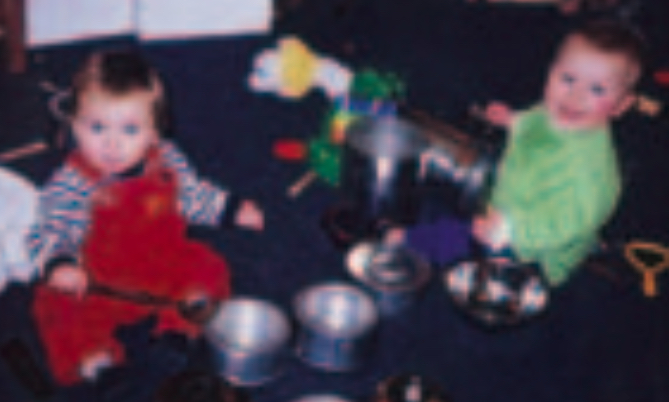Kei Tua o te Pae
Kei Tua o te Pae/Assessment for Learning: Early Childhood Exemplars is a best-practice guide that will help teachers continue to improve the quality of their teaching.
The exemplars are a series of books that will help teachers to understand and strengthen children's learning. It also shows how children, parents and whānau can contribute to this assessment and ongoing learning.
We are making improvements to our download-to-print functionality. So if you want a printed copy there are PDF versions available at the bottom of the main cover page.
Exemplars – Ngā tauaromahi
-
Te rakiraki
-
Paul found a rakiraki (duckling) on the road as he was walking to school. Whaea Margaret asked Paul if she could bring the rakiraki to the centre to show the tamariki. He agreed, and Whaea Margaret brought the rakiraki to the centre.
She introduced the rakiraki to the tamariki at morning mat time and told them that he had lost his mother. The tamariki were fascinated with the rakiraki and gathered around the new addition to the fold. The staff suggested we give him an ingoa (name), and the tamariki decided to call him Atawhai after a boy who left the centre to live in Australia.
The tamariki discussed the types of food Atawhai might eat and the sort of covering he has on his body. They discussed the fact that he has wings to help him fly from one place to another, and this led to a discussion about other types of birds. They talked about how Atawhai swims, how he uses his beak to pick up food, how he can turn his neck right around to scratch his back, and how lovely and soft he feels. The tamariki tried to turn their own heads right around and discovered how difficult this was.
Afterwards, some of the tamariki wanted to hold Atawhai. Some were a bit frightened, but after a while, they all found enough confidence. The staff encouraged the tamariki to be gentle because Atawhai was only a baby.
The duckling became part of the centre and was allowed to walk freely around, inside and outside. Tamariki were asked to watch Atawhai in case he got stood on (a remark one of the boys made).
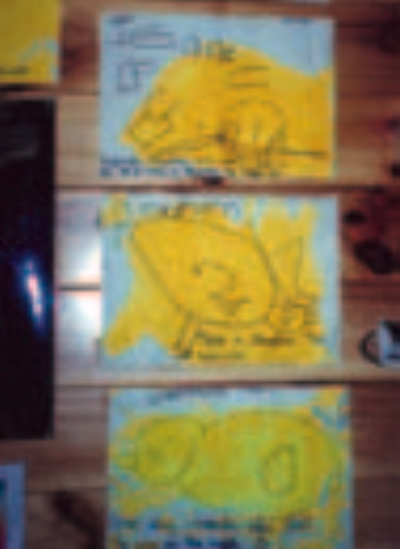
Artwork by the tamariki related to Atawhai the rakiraki is displayed around the centre.
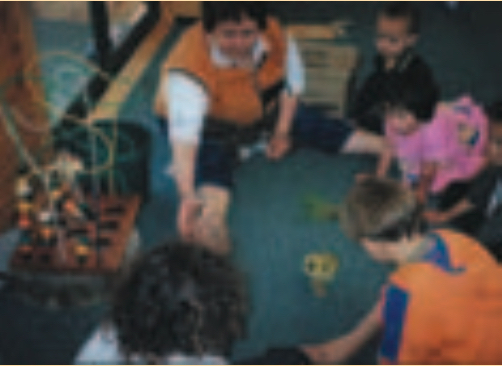
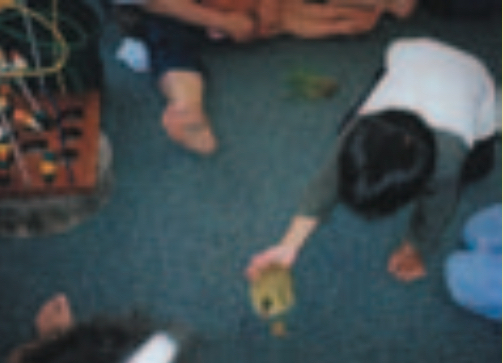
Can you see Atawhai? The tamariki crowd around him at mat time. Dayharn encourages Atawhai to walk towards Isaac. 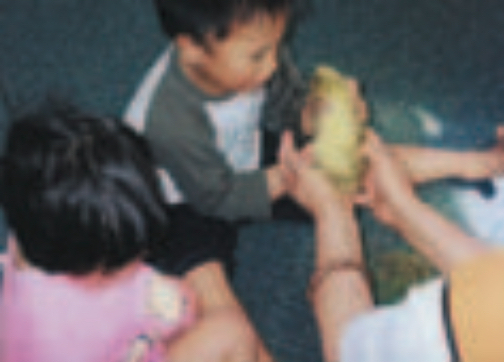
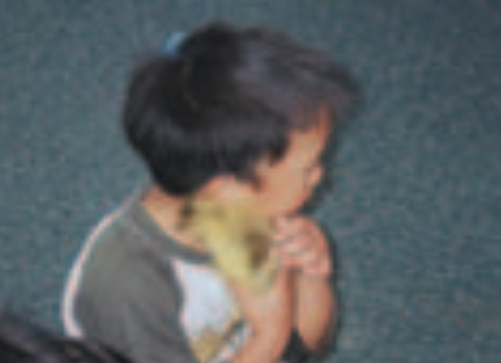
Whaea Margaret encourages Dayharn to hold Atawhai. Doesn’t he feel lovely and soft? Dayharn thinks so, too. Short-term review
Atawhai impacted on our tamariki quite strongly. They wanted to stroke, cuddle, and kiss him. The discussion that occurred during this one session could lead to our exploring lots of other areas within the early childhood curriculum.
Learning outcomes
The tamariki will gain:
- a sense of “who they are” – their place in the wider world of relationships and the ways in which these relationships are valued;
- a perception of themselves as capable of acquiring new interests and abilities.
What learning occurred here?
Discussions; adult–child interactions, with the adults encouraging the tamariki to be caring, nurturing, gentle, and confident enough to hold the rakiraki; dramatic play (when imitating Atawhai as he scratched his back); and turn taking.
What next?
We could base the programme around related areas, such as:
- fostering nurturing skills;
- studying other types of birds;
- encouraging artistic exploration;
- making a whare for Atawhai to rest in;
- looking at safety around water (due to Atawhai living in a watery environment);
- thinking about road safety (because Atawhai was found on the road);
- singing waiata about ducks;
- reading books about ducks;
- comparing ducks with other types of animals;
- learning alongside each other;
- learning about hygiene (the importance of washing hands after handling animals).
Evaluation
Since Atawhai joined us, the children have learned many skills. They have learnt to be caring, not just towards the rakiraki but towards each other as well. One child, in particular, was a bit rough around other children and was always being told to “use your safe hands”. Since having the rakiraki, this child’s behaviour has changed. The staff encouraged him to be gentle with Atawhai. He now tells other tamariki to use their safe hands, cuddles younger children when they cry, and looks after equipment in the centre. We often find this child holding Atawhai and stroking him gently.
Isaac became very interested in the way Atawhai swam in the tamariki’s water play trough and asked lots of questions about how he could float. This brought up the fact that we need to be safe around water and that ducklings are born knowing how to swim. The staff told Isaac’s mum about his interest in swimming, and she now takes him to the town pools for swimming lessons.
14 August
Whaea Margaret draws a BIG rakiraki on the mat (with thin masking tape) for the tamariki to sit in. She encourages them to help her to make a rakiraki shape.
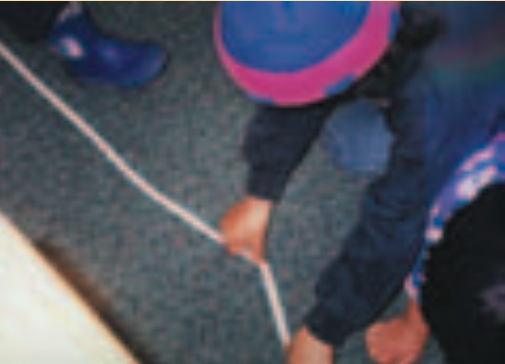
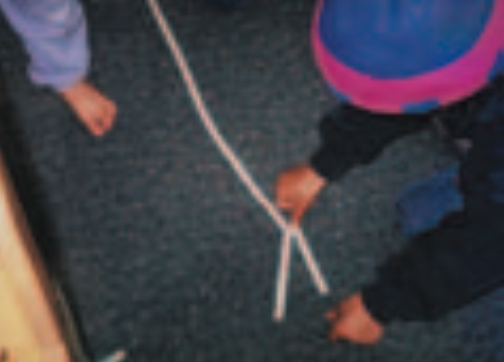
They start with one toe ... then another toe (2 toes ...) 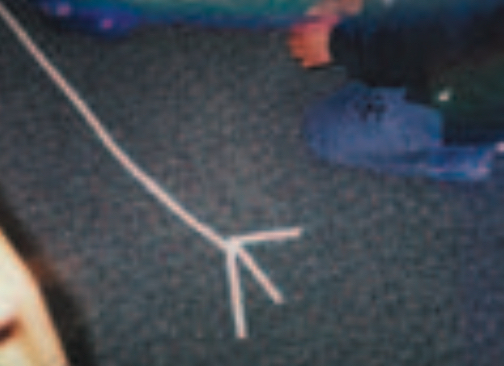
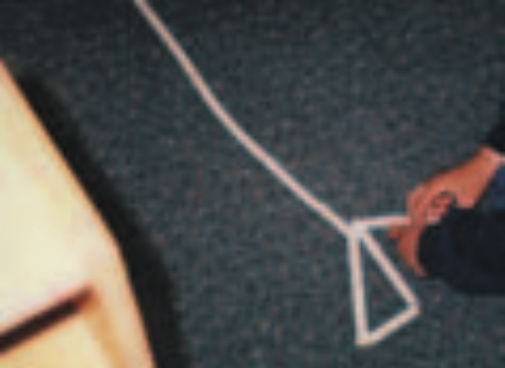
... then the third toe ... and then the web that helps him to swim. 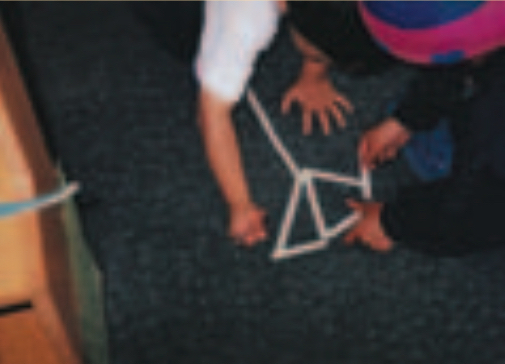
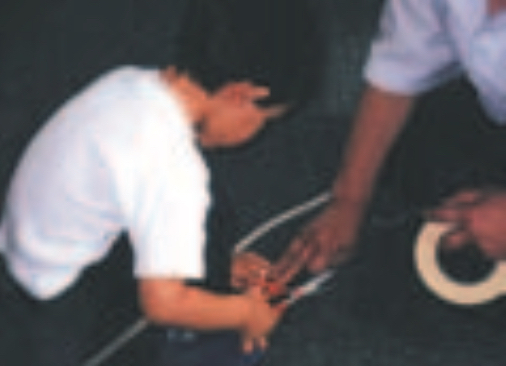
They put the finishing touches onto the webbed foot. Whaea Margaret asks William to help her make the rakiraki’s wing. 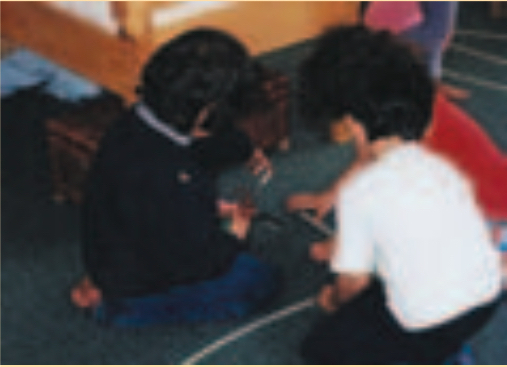
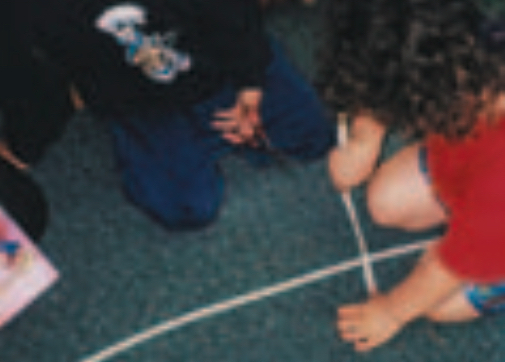
Isaac and Hape come to help William. What great teamwork, tamariki mā! “That’s right, Isaac, a little bit to the left.” Isaac holds the tape while Hape gets ready to cut it. 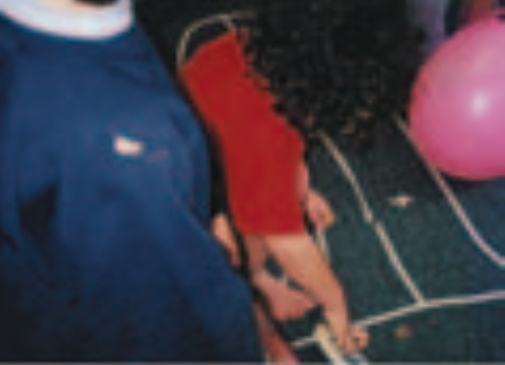
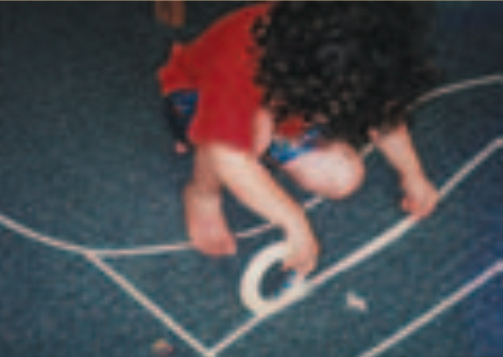
Isaac and Hape then begin on the beak ... ... and complete it with one last piece. 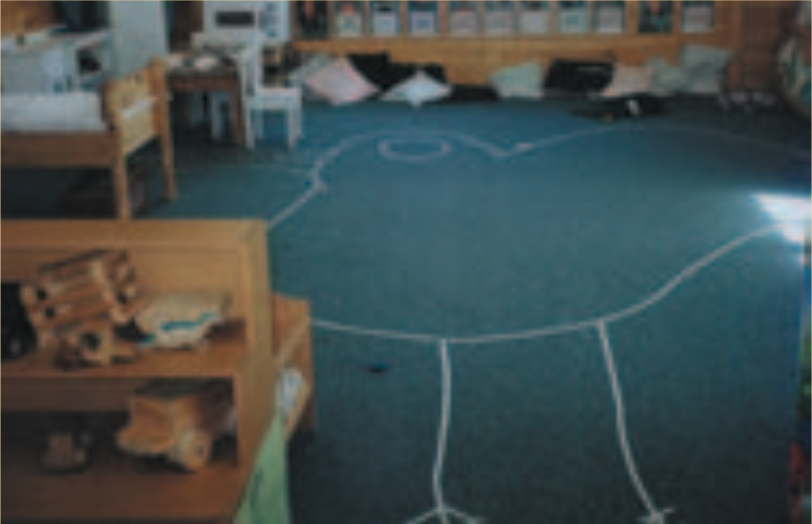
The completed rakiraki. Now we can sit in it, do activities in it, and even put Atawhai in it. We can even have mat times inside the rakiraki.
Ka rawe hoki te mahi a ngā tamariki!
He aha anō he kaupapa, e pā ana ki a Atawhai, mā tātou hei mahi?
What are some other things we could do that relate to Atawhai?
We’ll see.
A whare for Atawhai
During mat time one day, Dayharn said, “Whaea, where’s Atawhai’s house?” She told him that he didn’t usually live in a house but lived at the lake in a kōhanga (nest). The tamariki then decided to help make a nice, comfortable kōhanga for Atawhai.
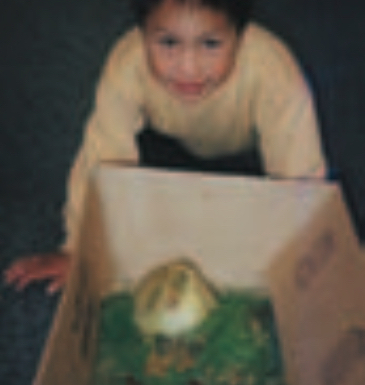
Then we discussed other sorts of animals. We talked about the types of animals that we could keep at home or at the centre. The tamariki suggested cats, dogs, and birds (in cages).
Christian said that he had a guinea pig at home and that his name was Chocolate. We asked Christian if he would like to bring Chocolate in one day, and he agreed.
The next day, Christian brought along his guinea pig. The tamariki crowded around Chocolate. Our discussion revolved around Atawhai and Chocolate’s habitats and the differences between the two animals, for example, the differences in their coats.
Soon, the tamariki were talking again about houses for different types of animals. The staff encouraged them to build a whare out of small pieces of wood for Atawhai and Chocolate to share.
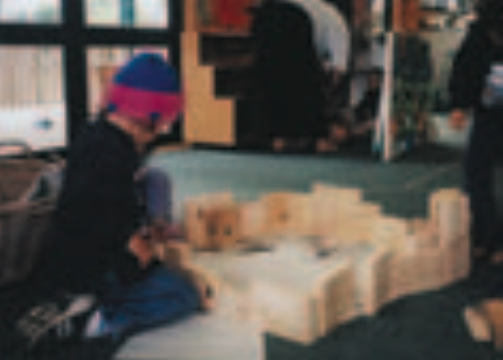
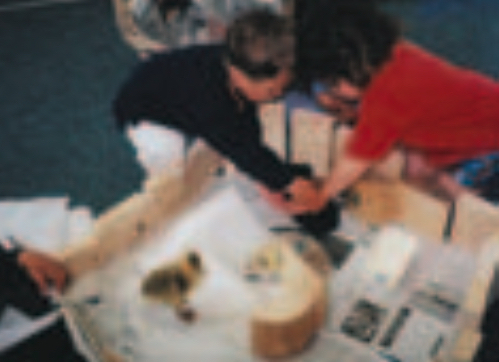
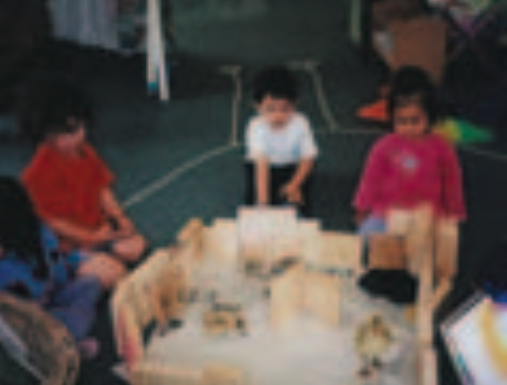
The tamariki begin building a whare for Chocolate and Atawhai. Isaac and Christian put Chocolate into the whare. Can you see Chocolate? Atawhai loves his new whare, but Chocolate is a little bit shy, isn’t he, tamariki mā?
The tamariki watch Atawhai and Chocolate exploring their whare.
Evaluation
Atawhai opened up a whole new perspective for tamariki thinking, learning, and development. The tamariki became more confident, expressive (in art and other activities), and creative. They developed a greater sense of self-worth and took responsibility for caring for other living creatures (including each other).
Atawhai fostered their nurturing skills when they realised that he had no mother. He made the tamariki aware of safety issues such as hygiene (washing hands after handling pets), water (swimming and wearing safety jackets when in a boat), and road safety (Atawhai being on the road by himself when he was found).
The staff elaborated on the topic of road safety by explaining the importance of having an adult with tamariki when crossing the road. As part of the road safety kaupapa, the tamariki went for a walk to another centre, using a pedestrian crossing to get there. The centre also had a “wheels day” to show the tamariki the importance of wearing helmets when riding bikes, skateboards, and so on.
A waka taua group from Raukawa Health invited the tamariki to sit in their waka. They gave the tamariki life jackets to wear and talked to them about water safety. The tamariki and staff thoroughly enjoyed this wonderful day.
Atawhai brought not only learning to the centre, but he brought love and joy to all of us as well.
-
-
Daniel's new grip
-
Examples or cues A Learning Story
Belonging
Mana whenuaTaking an Interest Finding an interest here – a topic, an activity, a role. Recognising the familiar, enjoying the unfamiliar. Coping with change. What a lovely story today. Daniel says that he would like some space to do a drawing. I watch as Daniel starts to write his name and comment that he holds the pen differently now. Remember I say, and recall an older story of when Daniel was writing his name. I get Daniel's portfolio and turn to the picture of him writing. “And remember,” I say again, “you kept saying 'I can't, I can't'. Now look, you can write your own name Daniel.”
Daniel is very impressed with himself and I can tell because he wants to go and show Jo, and next Melissa. “Look I hold my pen like this now,” says Daniel to each of the teachers, giving a demonstration.
Daniel says that “mum and dad taught me how to write my name. But he taught himself how to hold the pen.”
Well-being
Mana atuaBeing Involved Paying attention for a sustained period, feeling safe, trusting others. Being playful with others and/or materials. Exploration
Mana aotūroaPersisting with Difficulty Setting and choosing difficult tasks. Using a range of strategies to solve problems when ‘stuck’ (be specific). Communication
Mana reoExpressing an Idea or a Feeling In a range of ways (specify). For example: oral language, gesture, music, art, writing, using numbers and patterns, telling stories. Contribution
Mana tangataTaking Responsibility Responding to others, to stories, and imagined events, ensuring that things are fair, self-evaluating, helping others, contributing to programme. 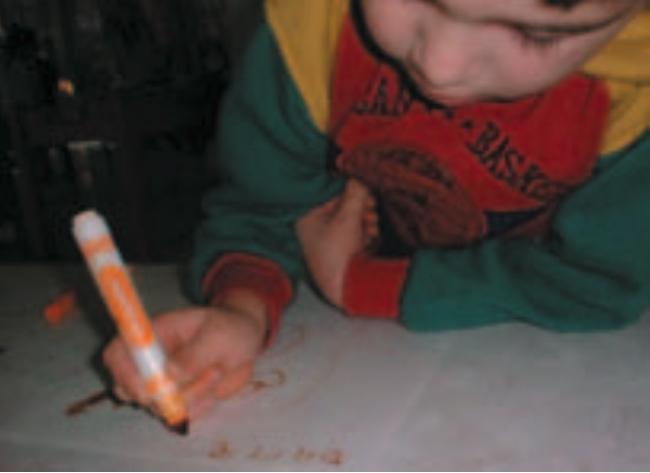
Daniel shows how easily he can write his name now, wonderful.
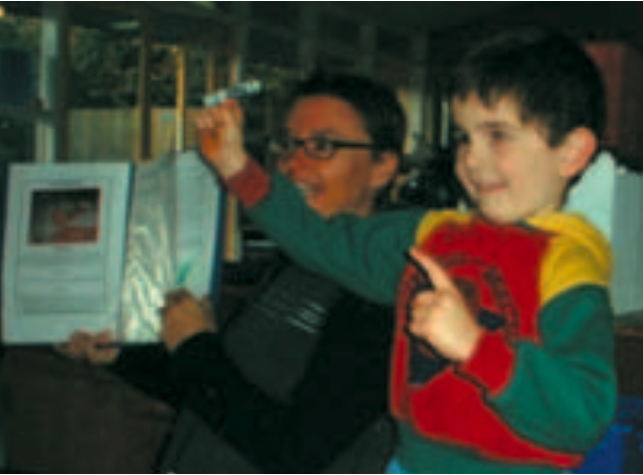
Daniel talks to Jo about sharing his new skills with the class. Look at the new grip he has now.
Short-term review
I love the way that Daniel seems so pleased with himself, and am really pleased with how much he wanted to show everyone what he is doing. He tells me that he is going to practise more and do more. With good feedback from his peers and teachers I am sure that this is all the encouragement he needs. What do you think, Daniel, is that a good idea?
-
-
Greer's increasing confidence
-
February
Teacher: Robyn
I was staying close to Greer and encouraging her in her play. At the same time, I was overseeing the play of six or seven other children in the room. Greer was involved with the dolls, but her concentration was interrupted by her need to look around and check for my reassurance in the presence of a lot of children.
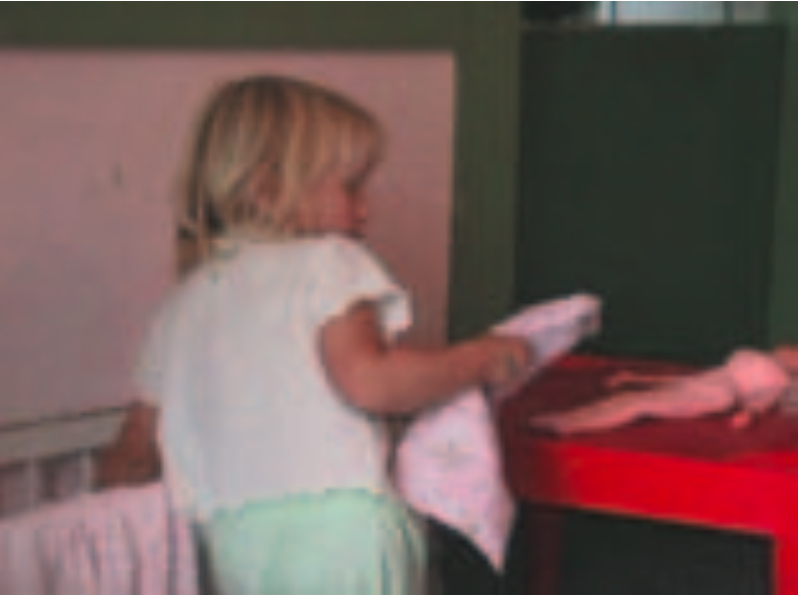
July
Teacher: Kerri
I noticed Greer at the puzzle table, very involved in her puzzle. She had been playing with Zhanaira, but now she was choosing to be alone. The puzzle was one of our harder ones, and Greer was very competent in doing it. She spent a lot of time trying to get the hat on the puzzle person.
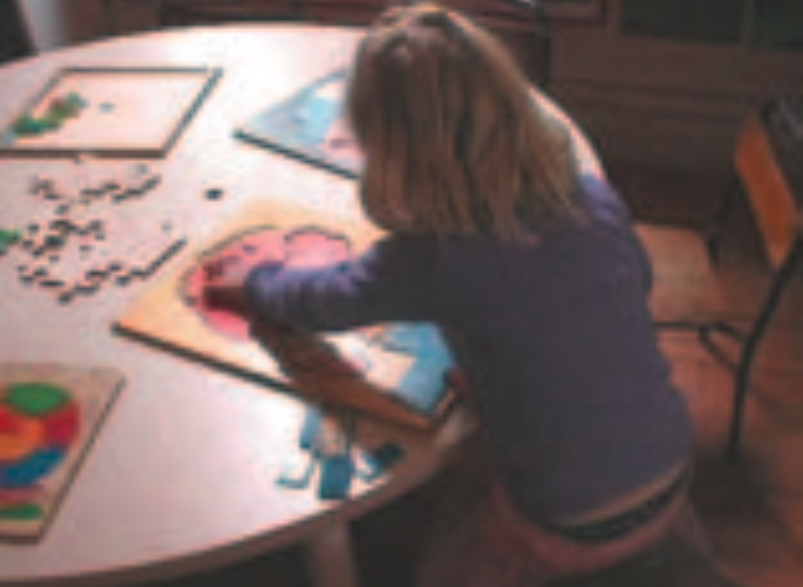
As I sat with Greer, she used a lot of non-verbal communication. She looked at me as I spoke and nodded her head.
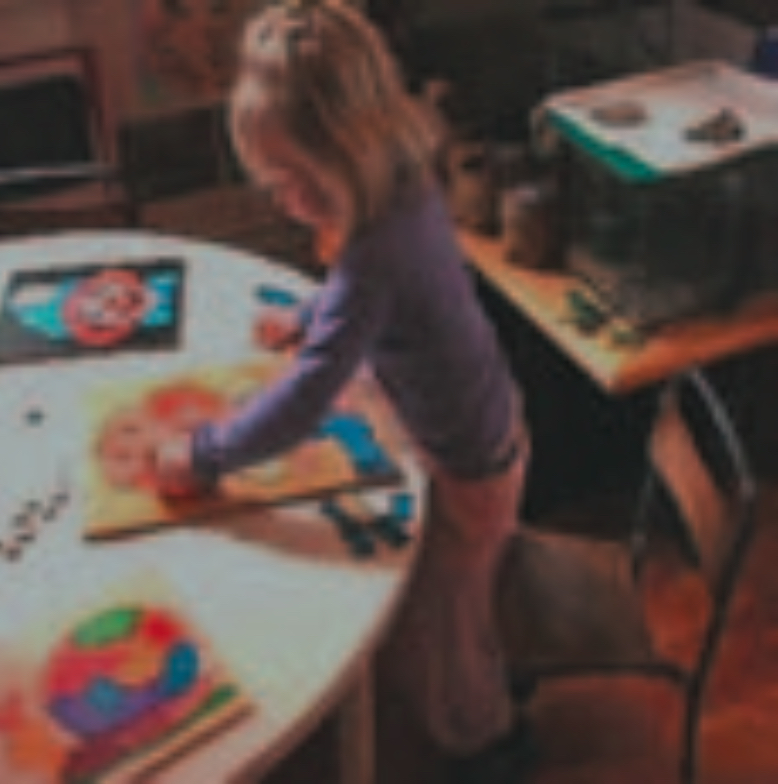
Short-term review
Greer had been playing in the back room with other children, being the baby in their game. I had reminded all the children that Greer can make her own choices and that they needed to give her the freedom to decide.
Greer moved on to the puzzle table from there and chose a tricky puzzle with two layers. She worked systematically, starting with the feet, then the head, the body, and lastly the legs. When Greer had finished, she shrugged her shoulders and rubbed her ears, showing a flicker of excitement.
August – What a breakthrough!
Teacher: Robyn
Greer was working on the computer with Samantha nearby. She was using the memory game with the little man and all the doors. Greer was using the mouse confidently and successfully to play the game. Suddenly, she began to call to Samantha and talk to her about the little man going away to hide and her finding him again. She became more and more excited as her skill improved.
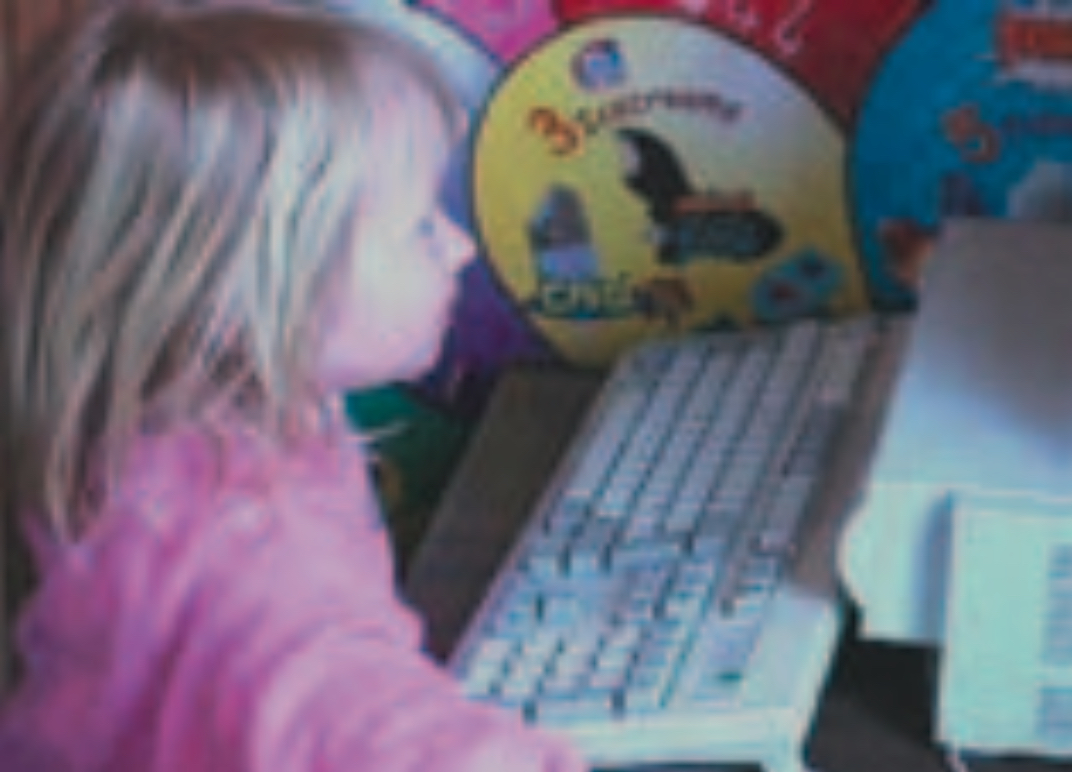
This was the first time that I had seen her so animated and calling out in the Centre. What a breakthrough!
December
Teacher: Kerri
I have noticed big changes in Greer lately. The most exciting change is in her level of confidence. Greer is happy to have a familiar person to spend time with at the centre, her friend Sophie.
Today Greer had a lovely time with the sticky tape. Her new-found confidence enabled her to fully explore her surroundings. She began by joining my group at the collage table, quietly finding a chair for herself and giving me a smile. Greer told me that she could write her own name and proceeded to draw me a star.
Short-term review
Greer has broken through some great barriers and now feels confident enough to talk to all the teachers and children. This has been helped by having her friend Sophie attend the centre on the same days as her.
It is very rewarding to see Greer being so animated and excited and discovering all the possibilities the centre offers her.
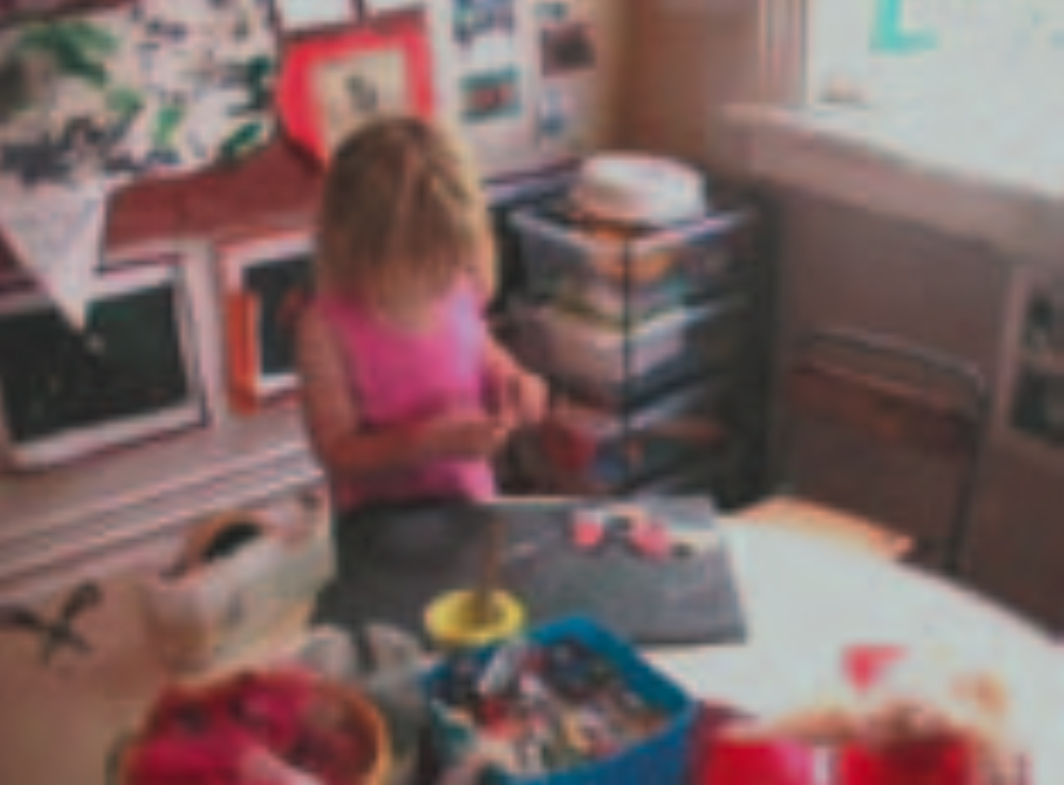
May
Teacher: Samantha
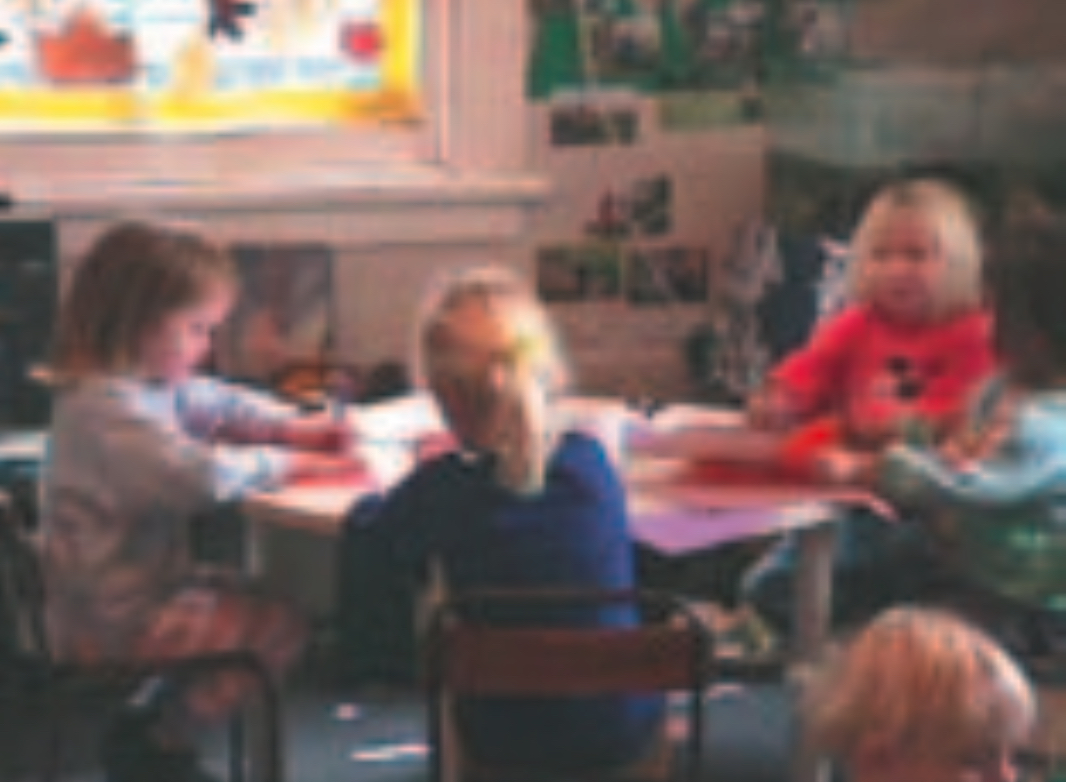
Greer chats confidently with Grace, Sophie, and Kelly.
May – Visit to O-Huiarangi
Teacher: Kerri
It was such a big help to have Greer in my group. She helped Rhys and Logan up all the steps. She spoke very gently and encouragingly. I especially loved the way Greer made a special effort to look into the boys’ eyes when she spoke to them. She chatted away throughout the whole trip and made sure she got the window seat on the bus when we came home.
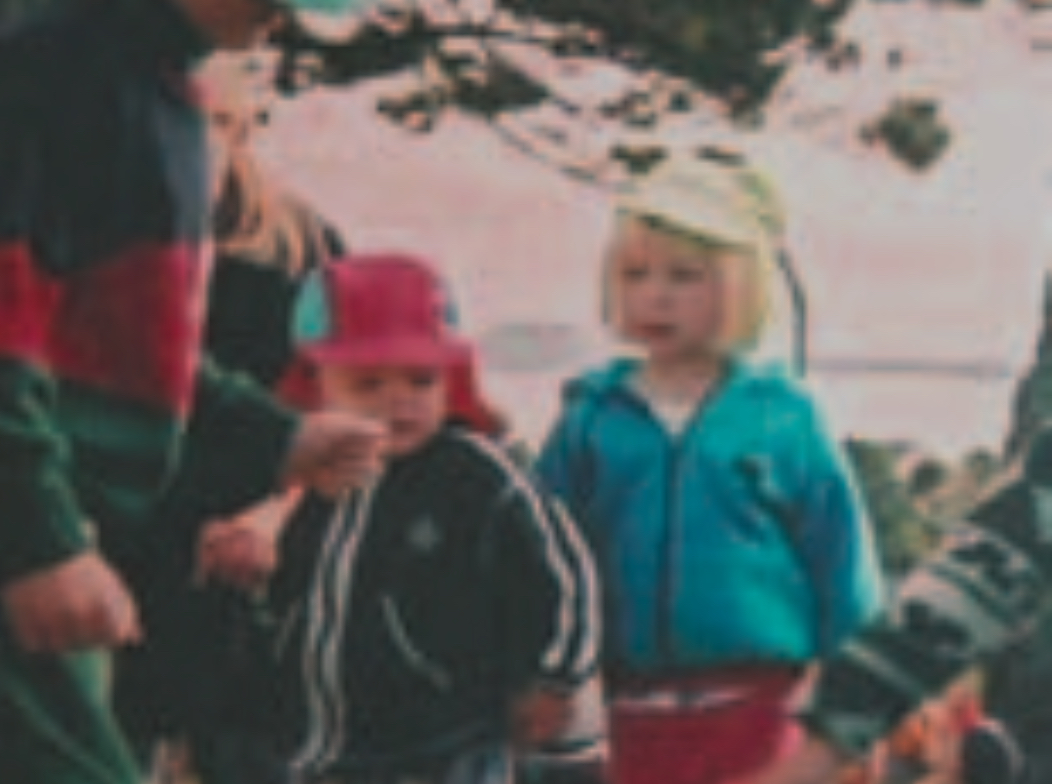
In the weeks that have followed, I have noticed that Greer is still interested in reading and writing about our mountain.
Short-term review
Greer is constantly increasing her confidence, and it is wonderful to see her starting to take a supportive role with children younger than herself. She is showing interest in maintaining the friendship she made with Logan on the day of the trip. She is also taking her interest in the mountain further by looking at books about mountains and volcanoes.
May – Engaged in reading
Teacher: Kerri
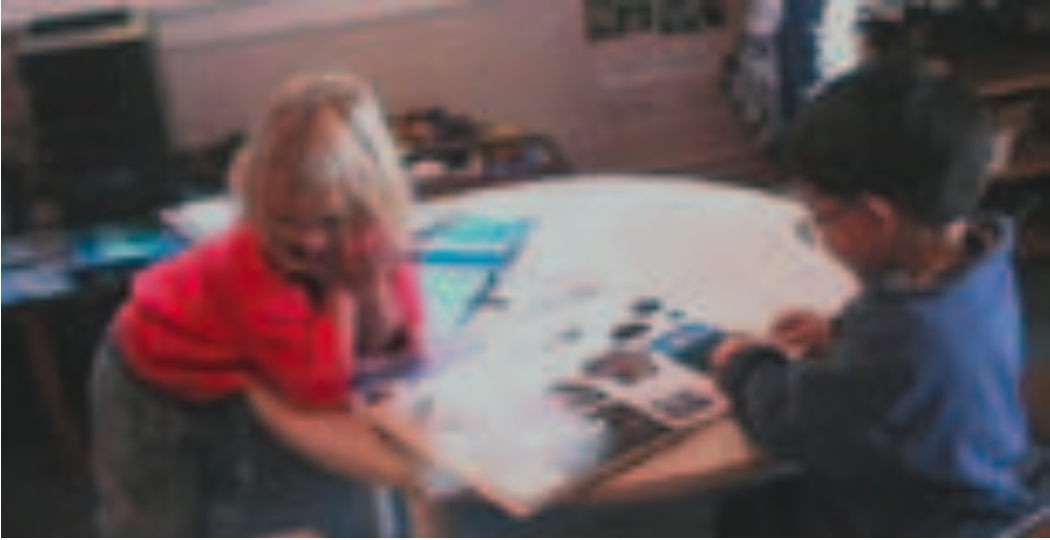
Greer’s interest in our mountain, O-Huiarangi, continues after our recent visit.
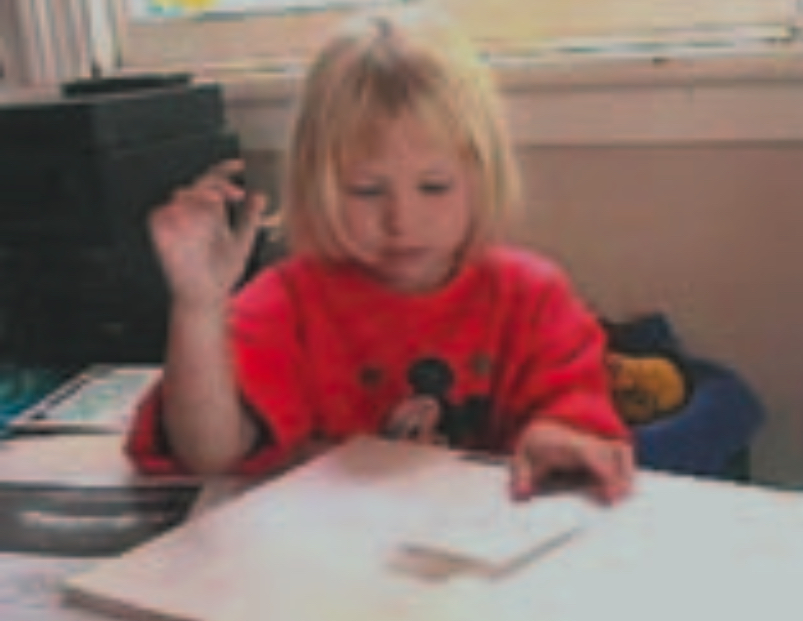
Greer listened intently to Cameron as he talked about volcanoes and then began to read her own book. Then she started talking quite confidently to Cameron about volcanoes.
Short-term review
In the past few months, I have noticed Greer developing a sense of belonging and contribution. She actively contributes to conversations and group play and has starting giving support to younger children.
I believe learning about the environment around us – our beaches and mountain – has been exciting for Greer because she is actively engaging in all the learning around her. Greer always has a lot to say and is asking questions and sharing a lot of information about her family, in particular, her brother Blake.
What next?
Greer is the most wonderful artist. She might like to draw or paint pictures of our mountain, O-Huiarangi. I would like to see if a group of children would like to go to the field, sit on the cricket pitch, and draw the view of O-Huiarangi. Greer may be interested in this.
June
Teacher: Samantha
Today, not long after Greer arrived, David saw her, and the two were together for a lot of the morning after that. They spent the morning doing activities, playing games together, and just laughing at each other’s antics.
Short-term review
A lovely friendship has developed between Greer and David. It started a few weeks ago, and now they often seek each other out on the days when they are both here. David puts Greer very much at ease, and she feels comfortable communicating with him and even directing their play.
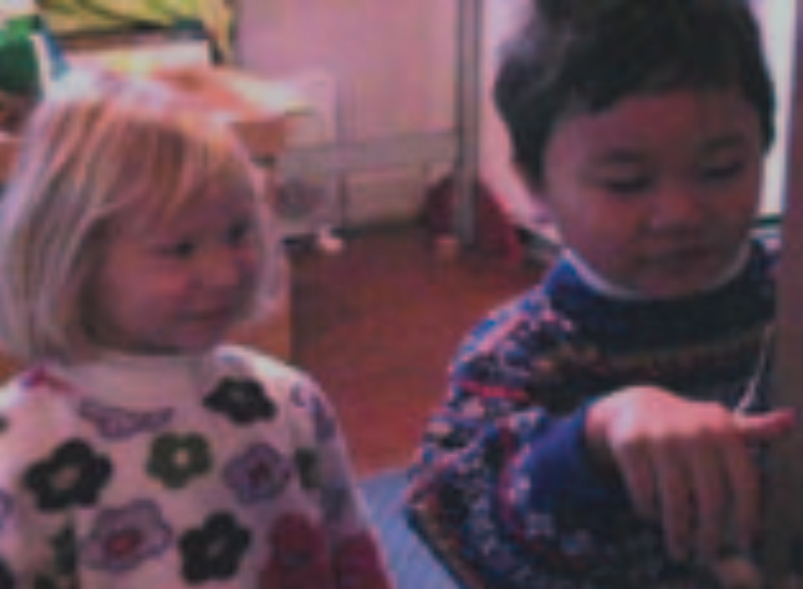
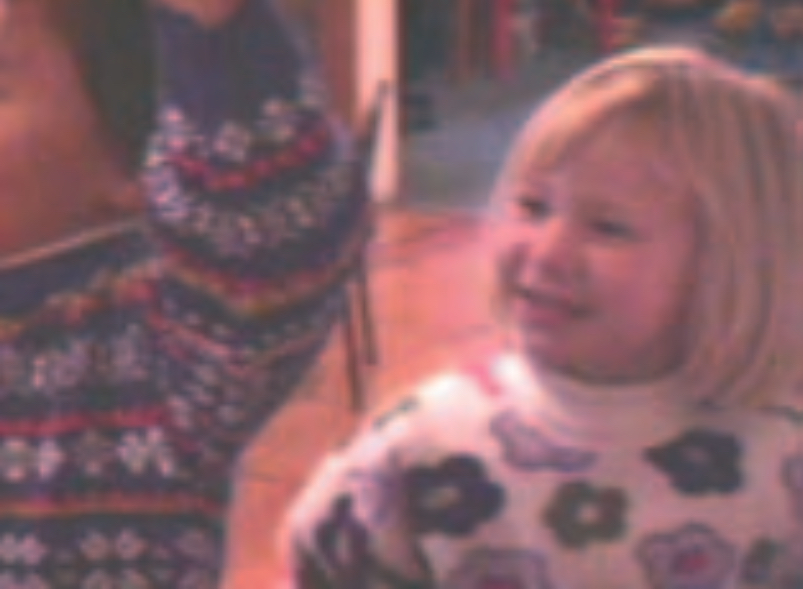
August
Teacher: Lee
David and Greer enjoying some dramatic play.
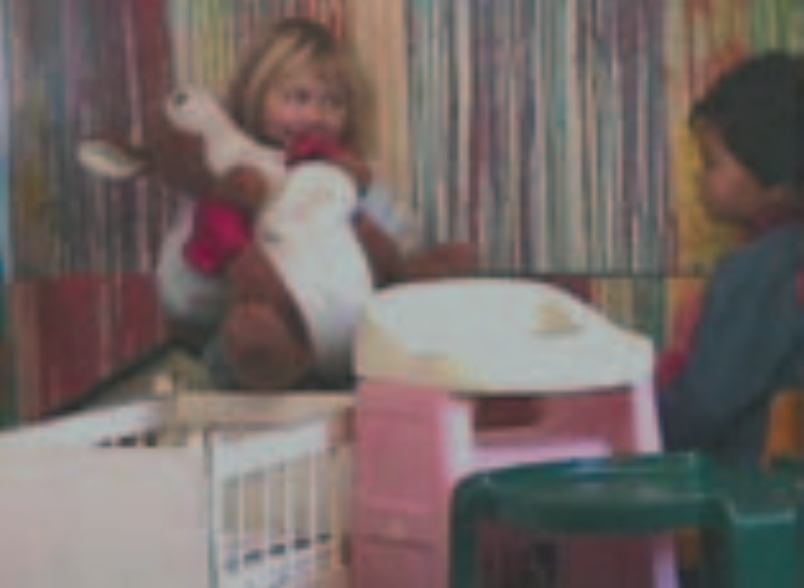

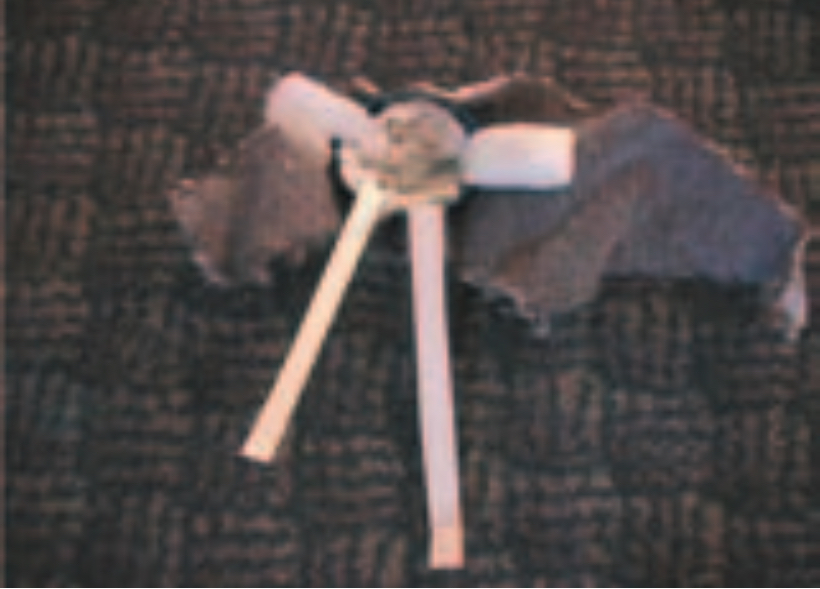
Greer asked me if I could help her make a tall doll.
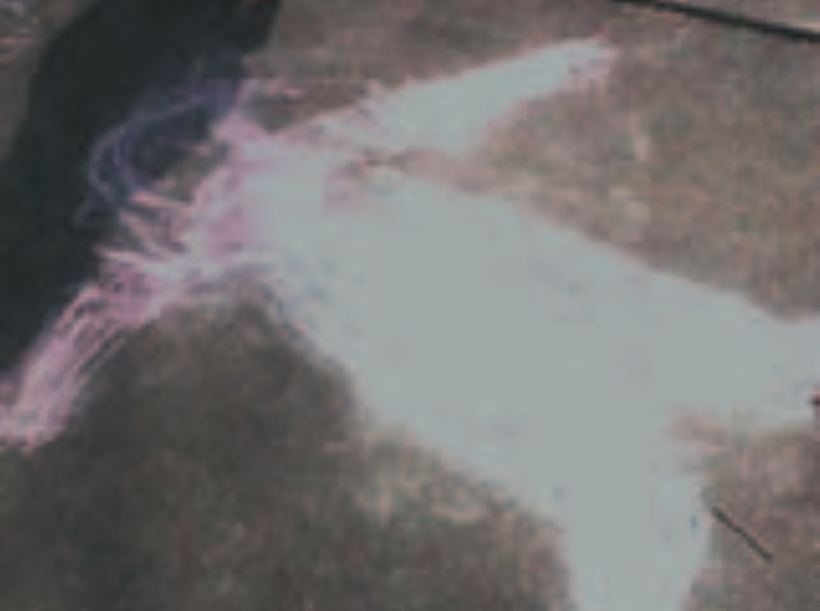
Greer lay down on her finished picture to see if she still fits. “Yes, I still fit”.
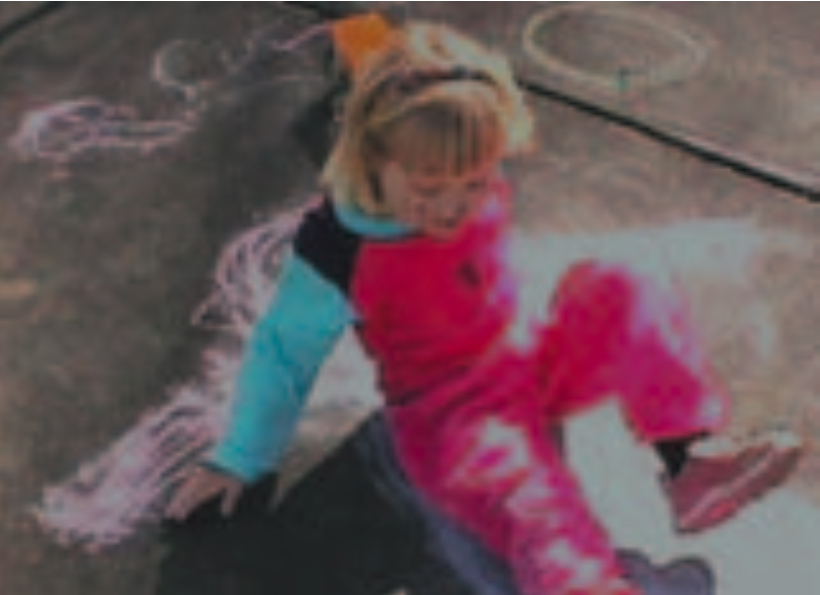
August – Singing to a crowd
Teacher: Kerri
Story time on Thursday was very spontaneous.
I invited anyone to get up and sing us a song. Amy was the first one to put her hand up and say she would sing. The song was not one that most children knew, and she became very shy about doing it. Greer said she knew the song, so I invited her to come and sing it. She came straight up to the front of the group and sang very confidently.
February
Teacher: Judy
Henry, Zachary, Greer, and I spent yesterday’s session playing the postman game, collecting and writing some letters. When Greer left today, she gave me a big hug. I felt good having friendly contact with her because today was only my second day at the centre.
-
-
George makes music
-
27 June
George took an interest in music today after I encouraged him to join in. He sat on my knee and gripped a stick puppet of a cow while we sang “Old McDonald”. He chewed on the cow’s leg and smiled at me. He really enjoyed it when I said “Moo, moo” quickly and loudly in a deep voice.
28 June
George became more involved in music today and danced to The Wiggles while standing and holding onto my hand. Previously, George has preferred to continue in solitary play during our music sessions, exploring the toys on the shelves and in the plastic drawers.
Learning story
26 July Teacher: Shaz
George became involved in creating his own music this morning. He discovered the basket of musical instruments and picked up a large shaker, banging it hard onto the floor. He looked up at us smiling at him and continued to bang even harder. We laughed and said, “You’re making music, George.”
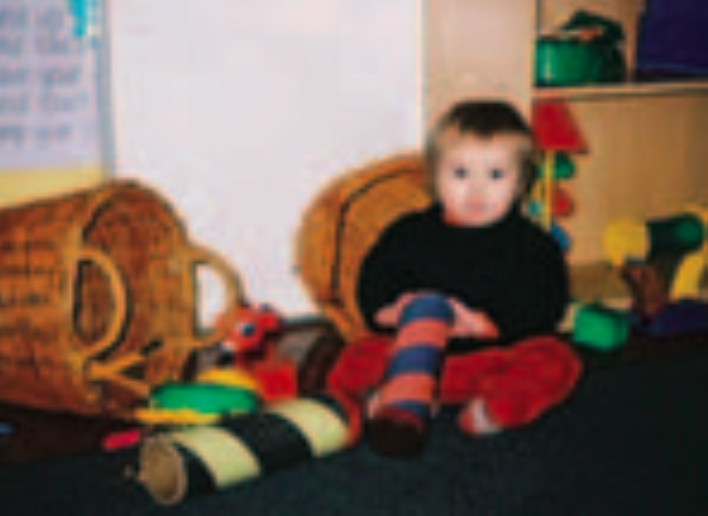
George went on to play different instruments, tapping the tambourine with one hand and playing the xylophone with his pointing finger.
Later, George was back at the basket of musical instruments, shaking the bells and banging on the tambourine. He tipped the basket over, exploring and listening to different instruments.
Learning story
27 July Teacher: Shaz
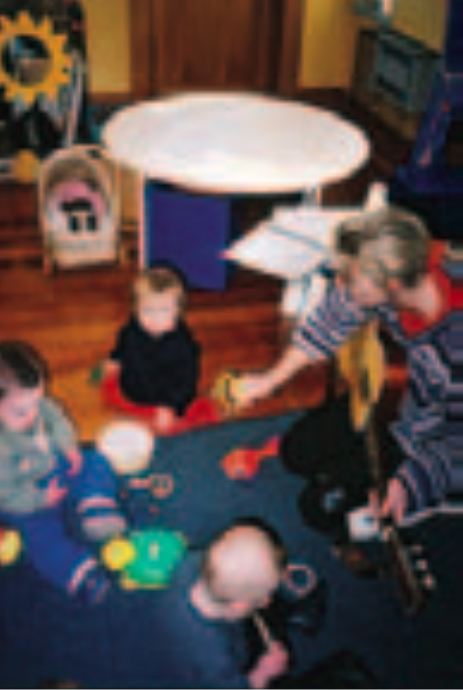
Today, I led a planned music session using the musical instruments. George participated with delight, playing all of the instruments. I was playing the guitar, and George took great interest in this, strumming it with his fingers and squealing with excitement, bouncing up and down to the music.
Interpretation
George is really interested in the different sounds that different objects make. He obviously gets a lot of pleasure out of the music and sounds that he makes. He is listening carefully and is engaged in what he is doing.
What next?
What else can we do to support George in working with sounds and music?
- Plan some music sessions to accommodate George’s interest in the musical instruments, including the guitar.
- Utilise the opportunities we have to incorporate sound making into George’s day-to-day experiences.
- Could we make a soundboard for George?
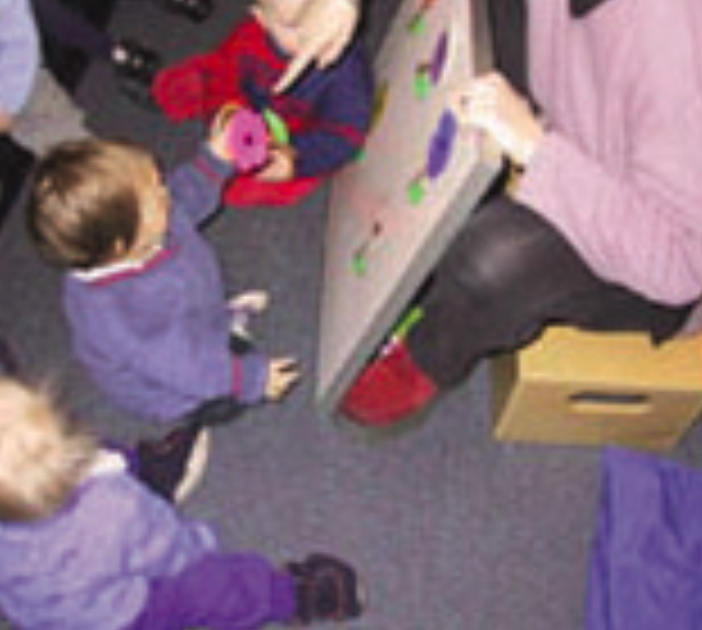
George takes his turn placing and removing his flower on the board as everyone sings “Five Coloured Flowers in Garden Grow”.
Learning story
2 August
Teacher: Nadine
We were fascinated by George’s involvement with heuristic play today. He sat in the same place for a rather long time, experimenting with several different objects and revisiting each one frequently. It seemed that he had certain objectives in mind.
George’s first item of interest was a shiny spoon with a long, wooden handle. He used his hand to bang down on a metal bowl as if he was banging on a drum. He then used the spoon to bang on three different bowls as if they were a set of drums.
George used the spoon to stir. He tasted the spoon, licking it as if he was licking an ice cream. He used his teeth to pick the spoon up by the long, wooden handle as if he had no hands.
He then went back to stirring. He used the metal container and a small wooden container, banging the spoon inside both containers and carefully listening to the different sounds he was making. After a while, he put the wooden bowl inside the metal bowl. He lost interest but later on went back to revisit his favourite spoon.
Interpretation
The way George kept focused on just a few of the heuristic play objects was of real interest to us. Though he was really involved in making sounds, he was fully exploring the objects through touch and taste as well. After trying different combinations of objects, he chose to use the spoon as his tool for making sounds.
What next?
Make use of more opportunities like this one for heuristic play when there are fewer children and fewer interruptions for George.
Set up heuristic play materials in different areas of the environment and present the materials in different, creative ways for George to discover and explore.
Learning story
16 August
Teacher: Nadine
At morning teatime, after deciding he had had enough to eat, George began to find other uses for the kai table. Banging on the table with both hands, he laughed cheekily, looking up at us and then at Jack, who was sitting beside him. Continuing to use the table like a drum, he then started beating using alternate hands. Jack, who had been quietly watching with interest, then also started to join in.
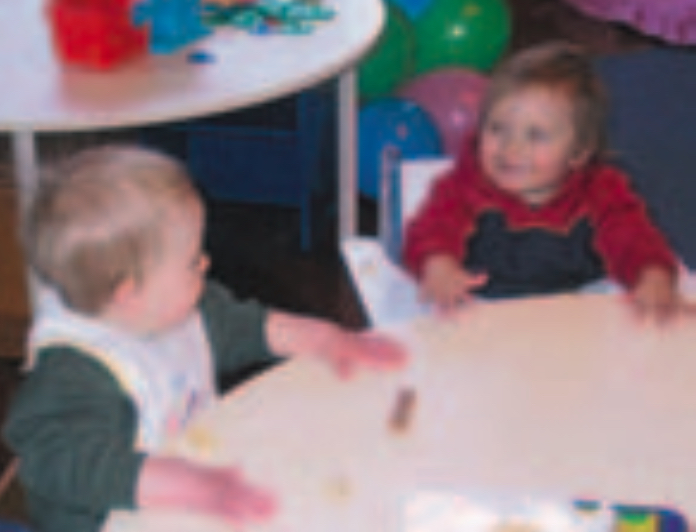
Interpretation
This is another example of how George finds pleasure in exploring sound and how he initiates this himself. There was a shared sense of fun here as George and Jack’s friendship continues to grow.
18 September
George was fascinated by the clicking noise from the yellow bus as he pushed it across the floor. As he was passing a large basket of toys, he stopped to see what was inside. He picked up the toy on the top of the basket. This was a small plastic turtle filled with tiny balls that rattled as George pushed it across the floor.
Parents’ voice
We are delighted with George’s development since he has been at the centre. He’s a lovely mix of bookworm, musician, artist, friend, and lovely, funny little boy. Shaz, Nadine, and Sally have definitely developed these skills, and we appreciate their individualised planning of developmental activities and the loving care they provide. If George ever leaves home, we know where he will head!
Learning story
13 November Teacher: Shaz
To extend George’s interest in music, I made some drums out of old tins and hung them from a tree outside.
When George spotted the tins, he started to play them, using a long plastic pipe to explore the sounds. When George’s friend Jack arrived, he looked at George as if to say, “Can I join you?" They smiled at each other with acceptance.
Suddenly, George stopped and began to sing “da, la, da”. They both showed great pleasure, smiling and laughing as they tapped on the tins.
When Jack decided to run off into the trees, George followed close by his side. As Jack tapped the stick he was still holding, George acknowledged that he was making similar sounds as with the tins, pointing and repeating his song, “da, la, da”. They seemed very excited as they both stamped their feet up and down, laughing together.
Interpretation
George has continued to enjoy developing his social play and is building many friendships with his peers.
George loves music. He is eager to explore sounds from the world around him. George responds to his own music making by mimicking the sounds he has put together to produce his own songs. He is developing a sense of rhythm and beat and is using sound as a fundamental form of expression when singing to music.
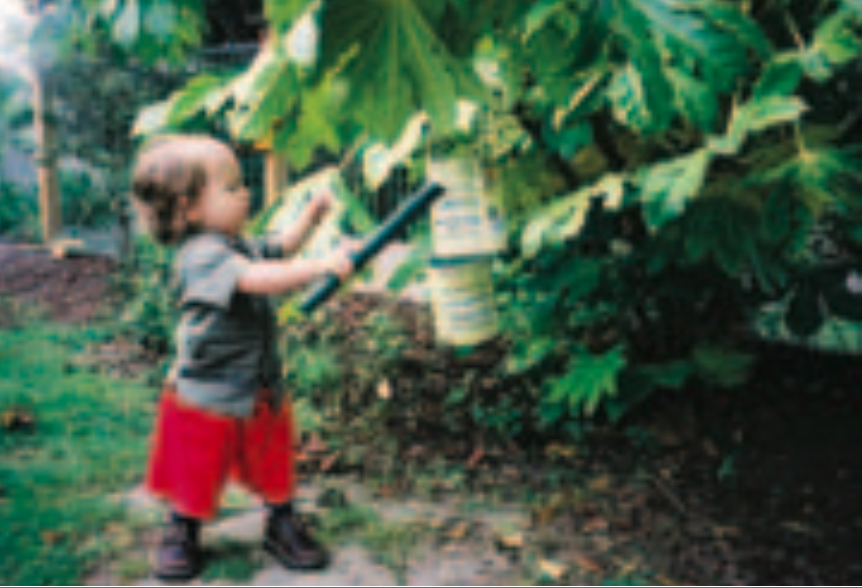
-
-
"Like something real"
-
Learning story
18 July
Ezra approached Sarah and asked her to “get the roadworks stuff out of the garage”. Sarah asked him what he needed, and he replied, “The stuff to fix the road”. Sarah asked Ezra what he thought the road workers might use to fix the road, and he said, “A bulldozer.”
Ezra got one of the diggers out of the sandpit area and put it up on the hill. He then organised a cone and a wooden frame on the hill to act as a roadblock. Ezra then went and got wheelbarrows, tape measures, hammers, and a ladder and put them all up on the hill. He put a helmet on his head and set to work fixing the road.
Ezra directed children on their bikes to go around the roadblock. He attracted a large audience of children during his “work” and ended up with seven children observing him. He informed them that he was doing “roadworks”. During his talk to the children, he used lots of language relating to the work he was doing, such as “cones”, “fixing”, “bulldozers”, and “roadworks”. Other children then got involved.
22 August
Ezra has been engaged in roadworks play over several weeks. His play has included tipping sand on the path and rolling it smooth with a toy roller, using the large sandpit diggers on various sites around the hill, and using the orange cones.
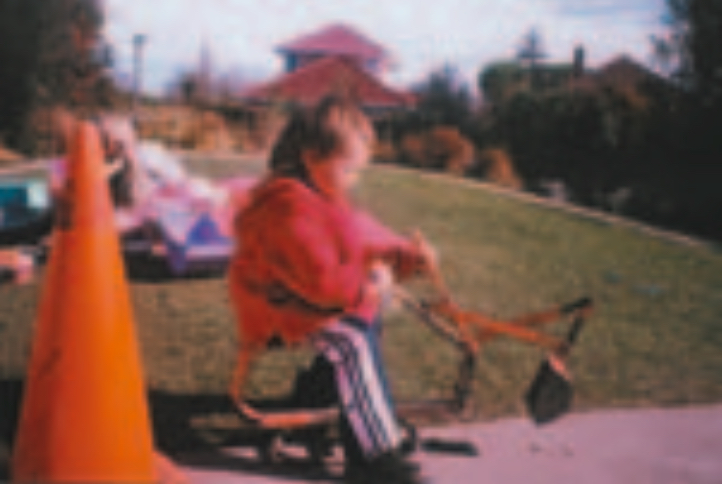
One day, he wanted some help in constructing a truck. “I want it to be like something real,” he said. He rolled a tyre to some crates he had set up.
“How many wheels does a truck need?” I asked Ezra. He counted softly, pointing left to right four times. “Four!” He found the wheels and happily got into his “real truck”.
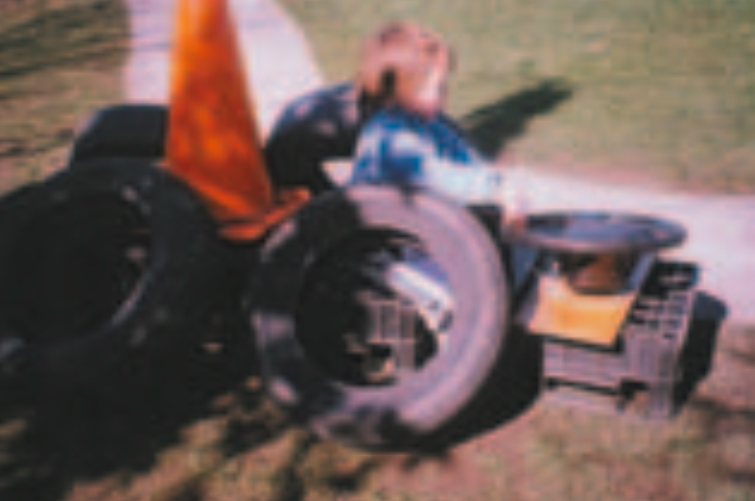
Interpretation
I loved how Ezra quietly figured out how many wheels he needed. I imagine that his knowledge about vehicles comes from cars. His statement “I want it to be like something real” reinforced to me the importance of realism to Ezra in his play.
What next?
It would be great to extend Ezra’s knowledge of trucks by asking Glen (my partner) to visit with his truck and bring in some of the gear he uses on the road.
29 August
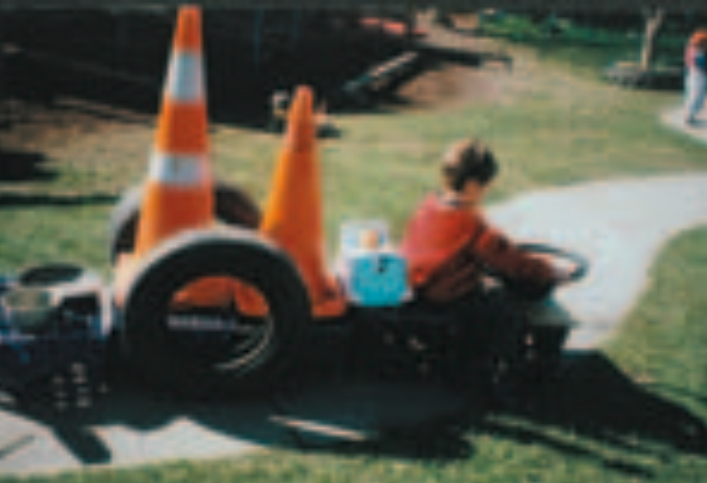
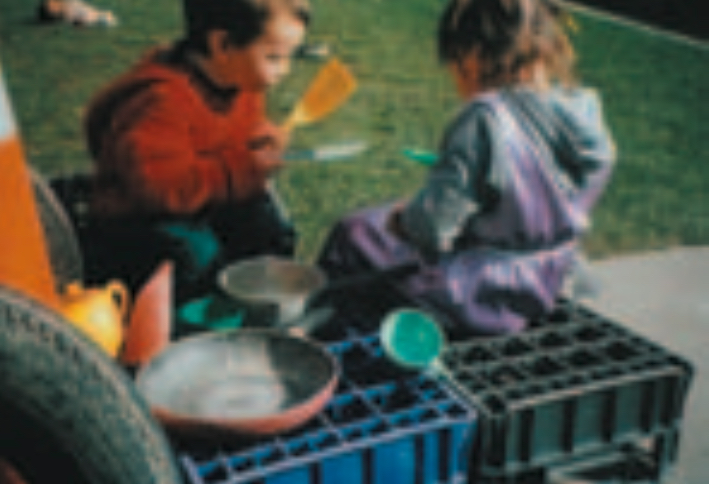
Ezra made another truck today with the crates and cones, but this one was quite different from the others he has built. This one had a kitchen in the back! Grace joined him, and together they spent over an hour driving and cooking. As the game progressed, his truck became a caravan. They added a mattress and blankets and spent time “sleeping”!
30 August
Ezra wanted to build the same truck as yesterday but couldn’t remember what it looked like.
I reminded him about how he had constructed it, and he went outside to create it. Today, he added more wheels and a digger on the back.
He walked over to a group of children and approached Daniel. “Hey, want to see my truck?” he asked. “It’s just over here,” he told him as they walked over the hill.
Daniel helped him bring more tyres to the truck. They worked together to move cones and diggers around the track to various worksites.
Later, Pem and Joey came to play. “Joey, come into the car. It’s nice and warm in here,” Ezra suggested.
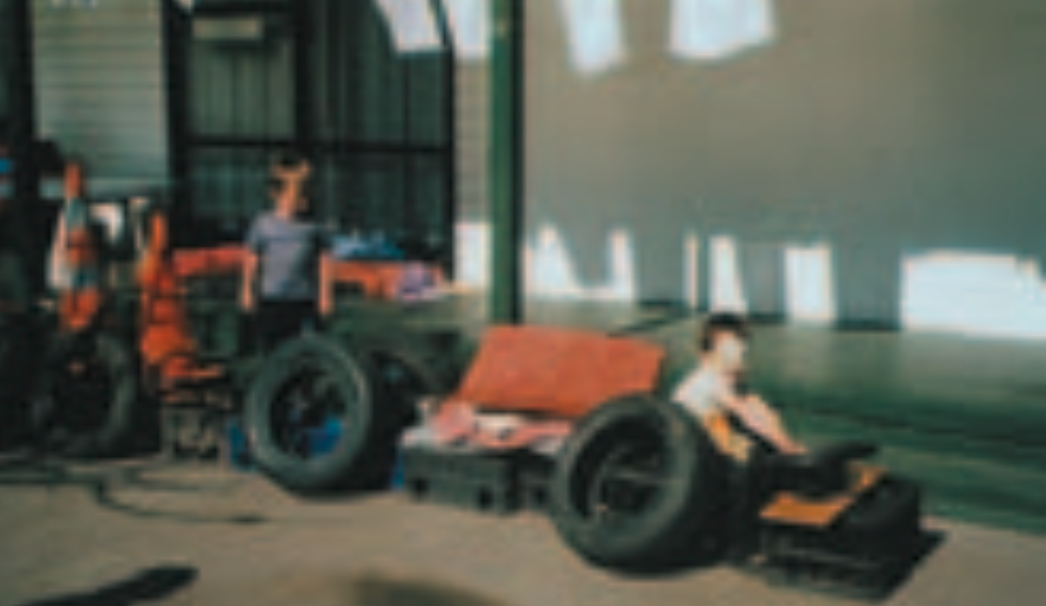
Toby joined in, too. “Toby, you sit in there and drive, and I’ll be up here with my babies.” Then all the boys “drove away”.
Interpretation
Ezra really wanted his truck to look like yesterday’s creation. He did well, working from memory and adding the kitchen on again. The trucks are becoming more and more elaborate as Ezra includes new storylines and characters in his play. Ezra is now successfully including other children in his play.
What next?
Perhaps it would be helpful to suggest to Ezra that he draw (or have someone else draw) a plan of his truck so he has a copy to use for next time.
6 September – A real truck comes to visit!
As we had planned, Glen and his workmates visited the centre. Prior to their visit, we talked to the children about what the workers might bring with them and encouraged them to think about the things they might like to ask the workers about.
Ezra had two questions to ask Glen, Dave, and the others. We wrote his questions on cards for him to “read”. The questions he asked were very relevant to the play he has been involved in.
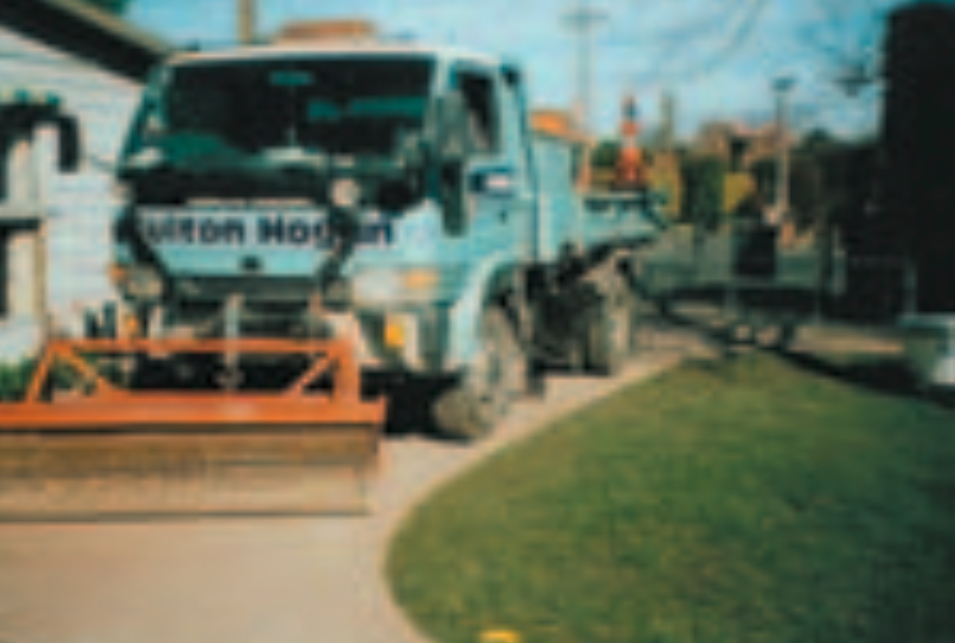
Question 1: “What colour is your steering wheel?” Answer: “Grey.”
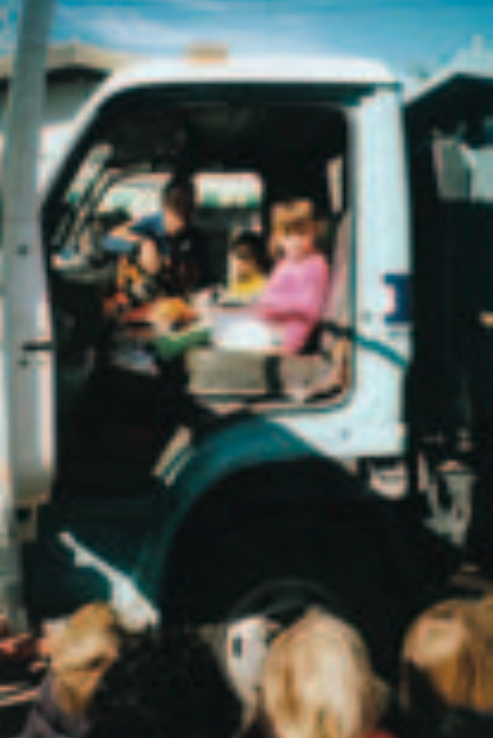
Ezra had the opportunity to see it for himself as he sat in the cab.Question 2: “How many wheels does your truck have?”
Answer: “Six.”
This is great information for Ezra to have for his future play.
After the visit, Ezra kept asking other children, “Did you ask a question? What was your question?” Asking questions seems to have been quite an important part of the visit for Ezra.
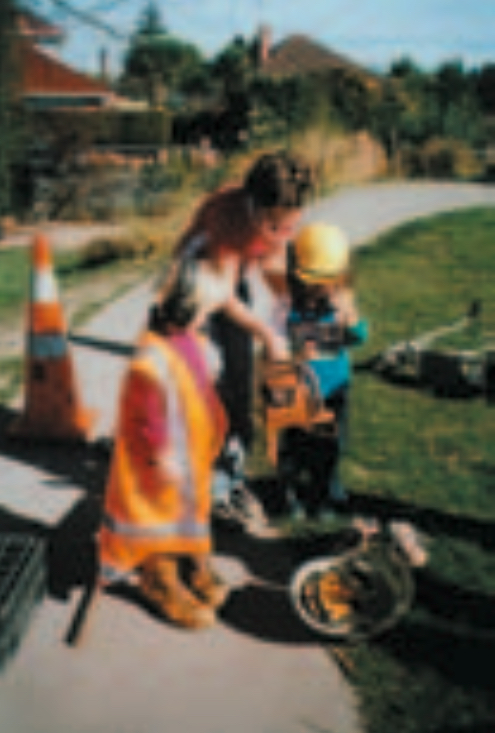
Ezra had the opportunity to wear some safety gear and hold a real chainsaw. He was fascinated by the fire and chainsaw helmets, both of which had visors. Glen left these with us for the day. We offered Ezra alternative helmets to use (our own play ones) but he only wanted one with a visor. We discussed creating a visor out of cellophane for him as an alternative.
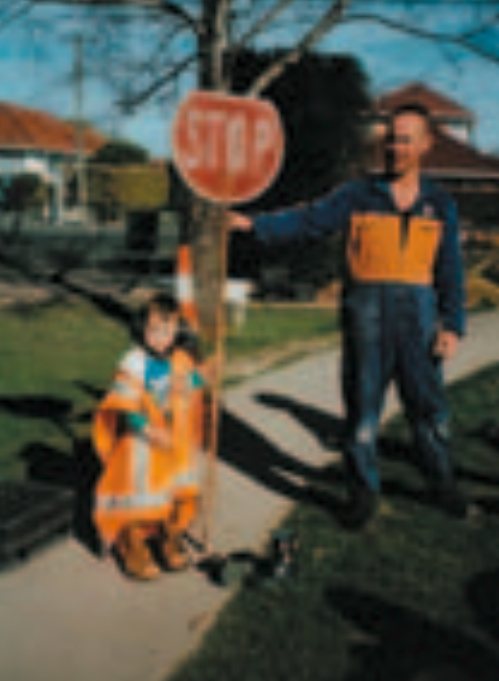
The stop/go sign made a great visual language resource. Ezra spent time directing “traffic” down the hill and, later, we made some signs out of cardboard. However, I would like to obtain a real one to keep at the centre (cut down to child size), because this would support and extend his existing play.
-
-
Maria's passion for kōwhaiwhai
-
15 April
Maria returned after the holidays keen to continue experimenting with koru patterns. She uses a range of drawing resources to create her koru patterns. Each time she makes a different drawing, Maria shows me her designs.
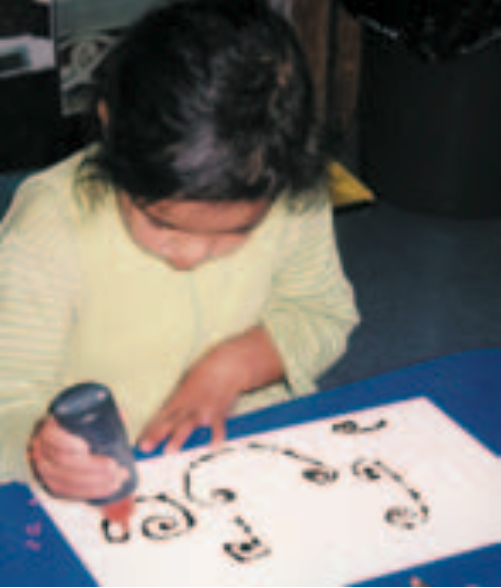
6 May
Maria showed me her work with koru patterns (using pencil). She went back to the office table and began to draw another range of koru patterns using coloured pens. The book “How Maui Slowed the Sun” by Peter Gossage was nearby. Maria identified spiral patterns in the illustrations. Zoe joined Maria at the table and said, “Look, I’m doing spirals.” Maria replied, “I’m doing lots.” Zoe asked, “How many? Thousands?” Maria went on to comment, “You know what, teacher, we made koru paintings.” (She was referring to the white paint on black paper designs some of the children made on 18 April.)
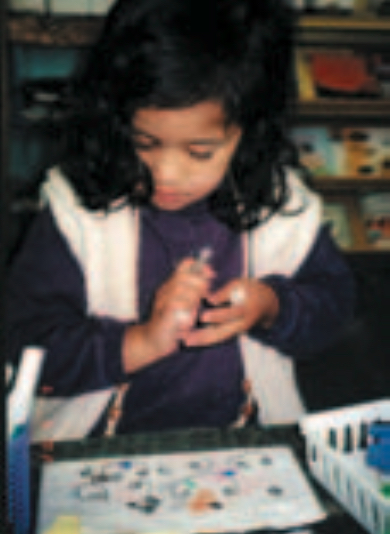
Short-term review
Maria continues to pursue her strong interest in creating koru designs. She practises her patterns independently in different curriculum areas and using a range of different media.
What next?
We will continue to encourage Maria’s involvement in accessing a range of media to extend her interest in the visual arts.
Child’s voice – Maria’s feedback about her kōwhaiwhai designs
10 June
I showed Maria her portfolio, which contained all of her kōwhaiwhai designs. She was very excited to see all of her work displayed and looked through her work, examining it closely. Maria looked at her PVA printing work and recalled the process: “I sticked the paper on there [on top of the printing block] and rolled it.”
Maria looked at the sketches and recalled when she had drawn them. (One was drawn at the marae and the other one at kindergarten.) Maria observed the similarities of the designs she had drawn – they were all kōwhaiwhai patterns. Maria went on to examine her photos and noticed the photo of one of her paintings. She noted that she had “coloured it all in”. She then looked closely at the actual painting and noticed that a very small section of the design hadn’t been painted!
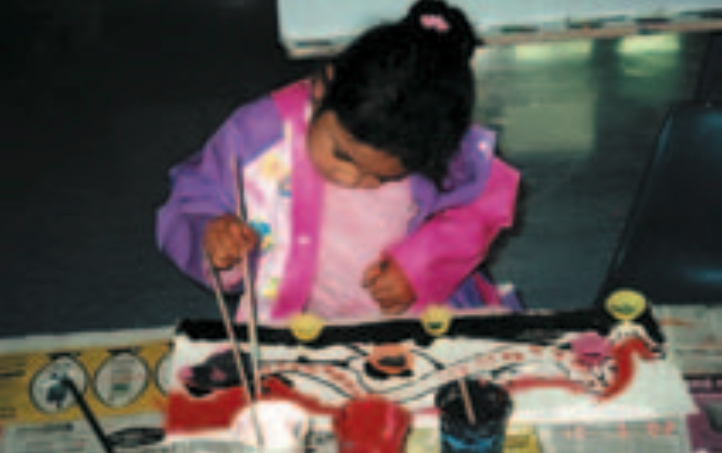
Maria noticed the information sheet from the Māori clip art kowhaiwhai patterns and identified the kaperua pattern as being the same as the patterns Frances had painted. Earlier in the morning, Maria drew my attention to the pink top she was wearing. “Look," she said, pointing to the koru-shaped patterns. Maria finds patterns throughout the environment.
Parent’s voice
12 June
Ever since Maria has started to draw kōwhaiwhai patterns, she has started to recognise them anywhere. For example, when she came to my work one day, she noticed some kōwhaiwhai stencils on the desk and straight away knew exactly what she was looking at. “This is what I draw at kindy, these kōwhaiwhai patterns.”
Maria is not only interested in kōwhaiwhai patterns, but she is also developing her artistic skills quite well at a young age. I do believe that this is one of her greatest talents and skills and try to encourage her in every way by buying the things she needs to help further her skills, and as Maria gets older, she will be a great artist.
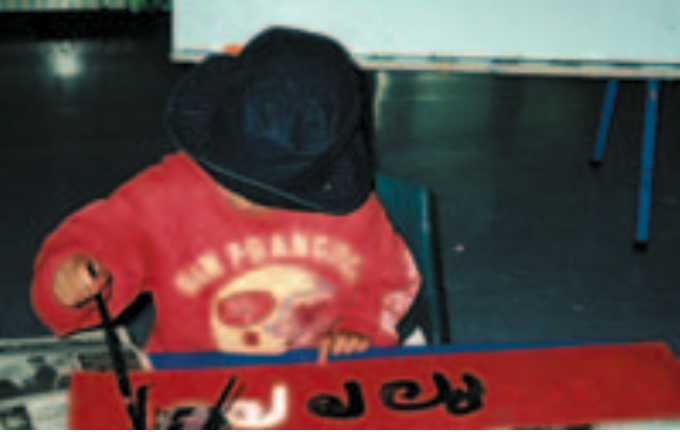
Teacher’s voice
Maria’s passion for the visual arts (particularly those incorporating kōwhaiwhai) has developed and deepened over the last four months. Her ongoing interest in exploring the extensive range of visual art media has motivated others to become more actively involved. This was very evident when I videotaped Maria working on a painting over two days. After the children viewed this, they returned the next morning eager to start working on their own paintings. Maria was driving the curriculum! I wonder where this passion will lead.
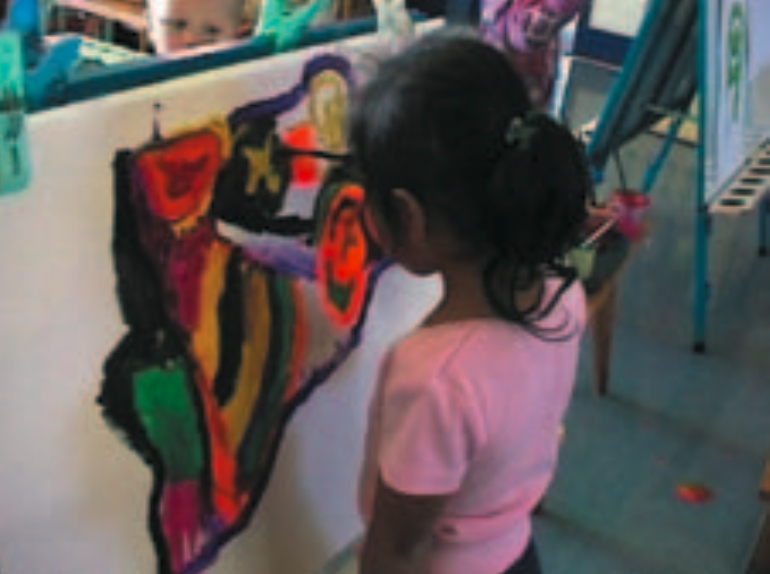
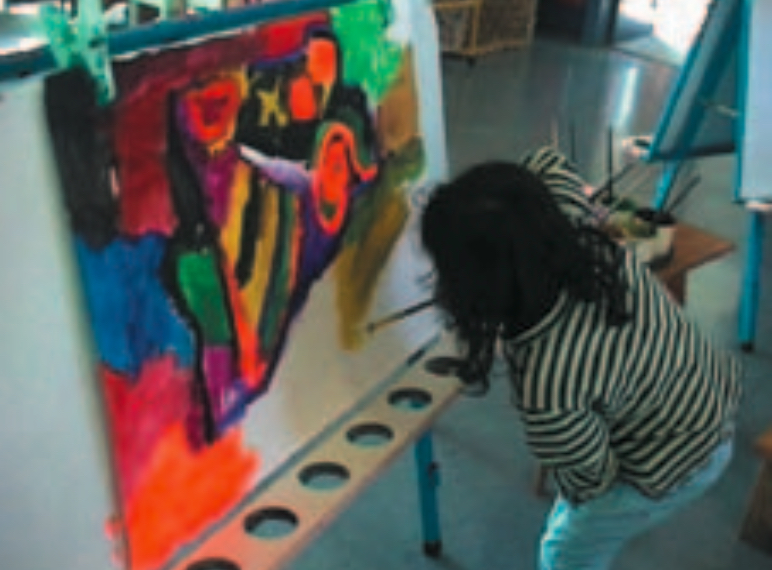
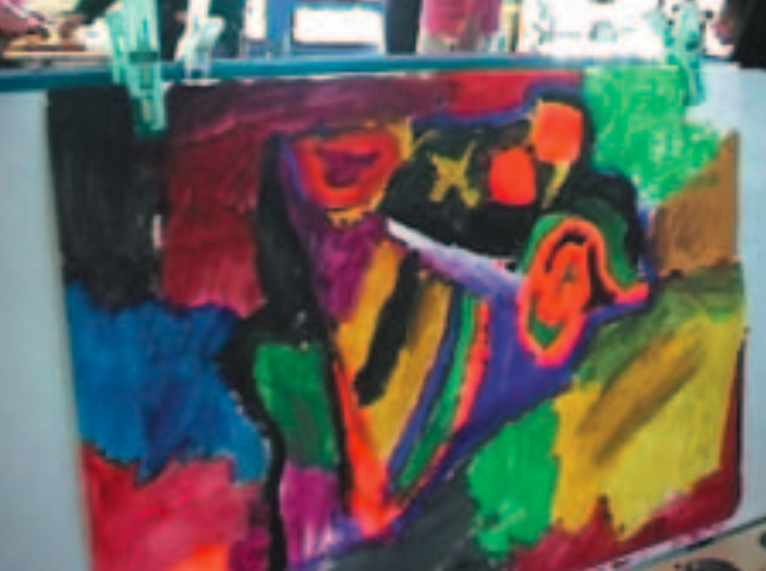
-
-
Fe'ao part 1
-
Introducing Fe‘ao
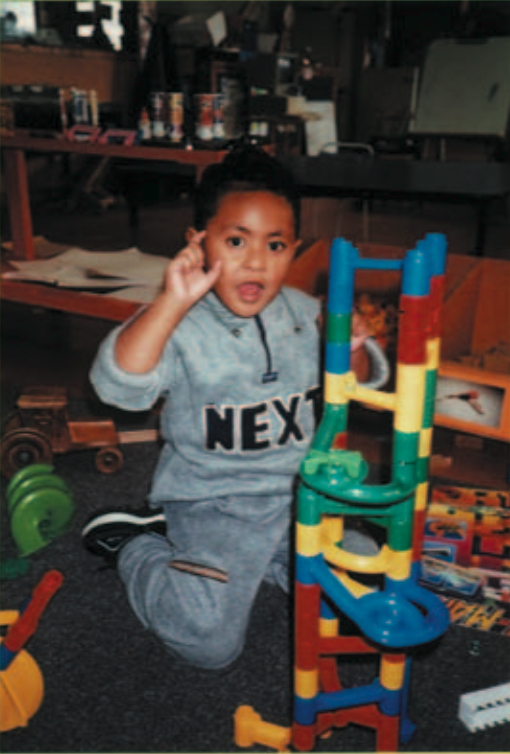
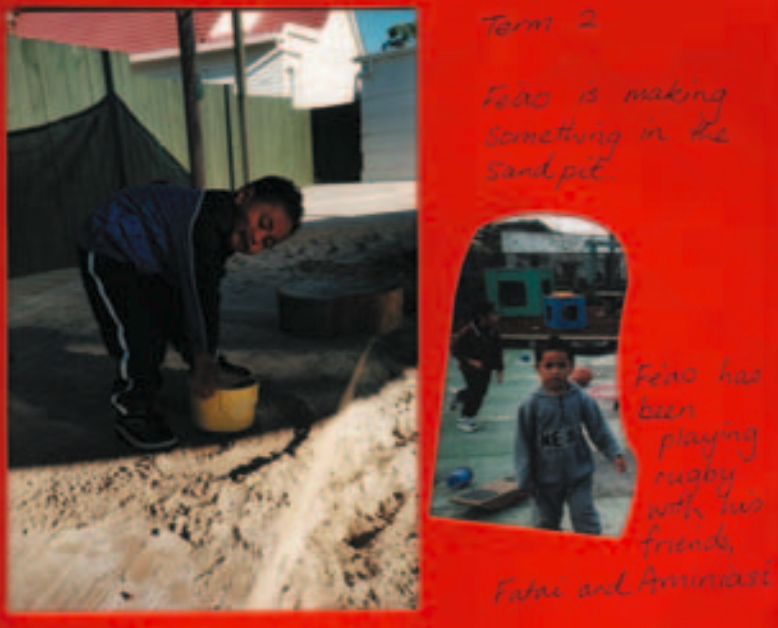
Learning story
30 September Teacher: Karen
The children were all inside today as it was a rainy and windy day. When I came across Fe‘ao and Fatai, they had set up their own card game and were deep in concentration, taking turns to put their cards in the middle. They had found some dinosaur matching cards in the science area and were using these to play their game. When they ran out of cards in their piles, they would deal them out again.
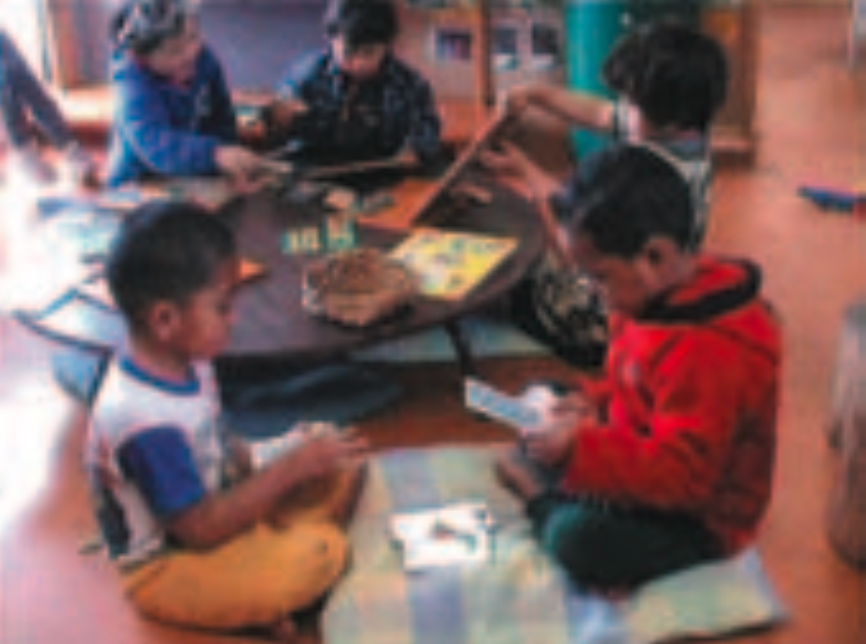
Short-term review
Fe‘ao and his friend Fatai set up their own game independently. Fe‘ao understands that games have rules and that you take turns. Fe‘ao was so skilled in setting up his card game that I wondered if he was using prior knowledge. Has Fe‘ao seen adults or other children playing cards at home or on television?
Learning story
13 November
Teacher: Karen
Today Fe‘ao joined me at the puzzle table. There was a new alphabet puzzle out. Fe‘ao took an interest in the pictures and began to pick them up, telling me what was on the pieces. We turned this into a game. I read a letter and the word, and Fe‘ao looked for the picture to match and then fitted the two pieces together. We used the puzzle box as a reference because it had a picture of the complete puzzle on it.
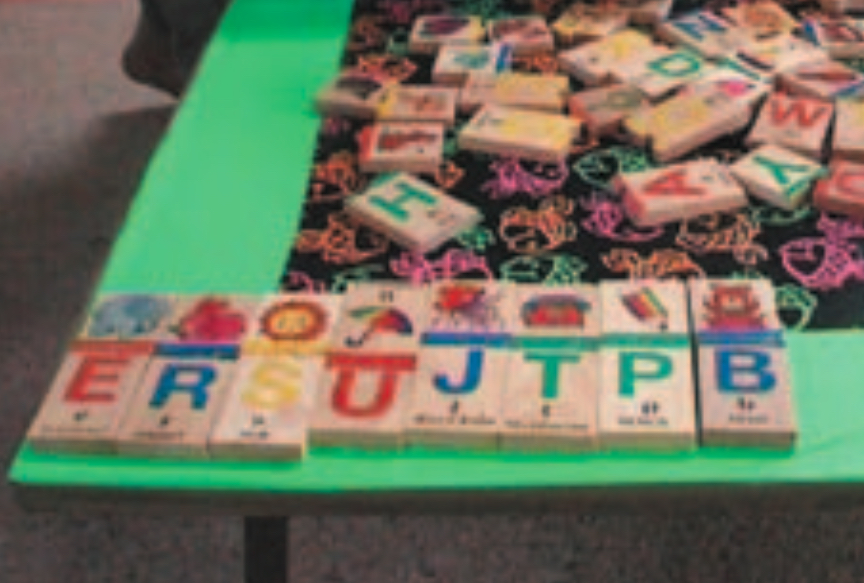
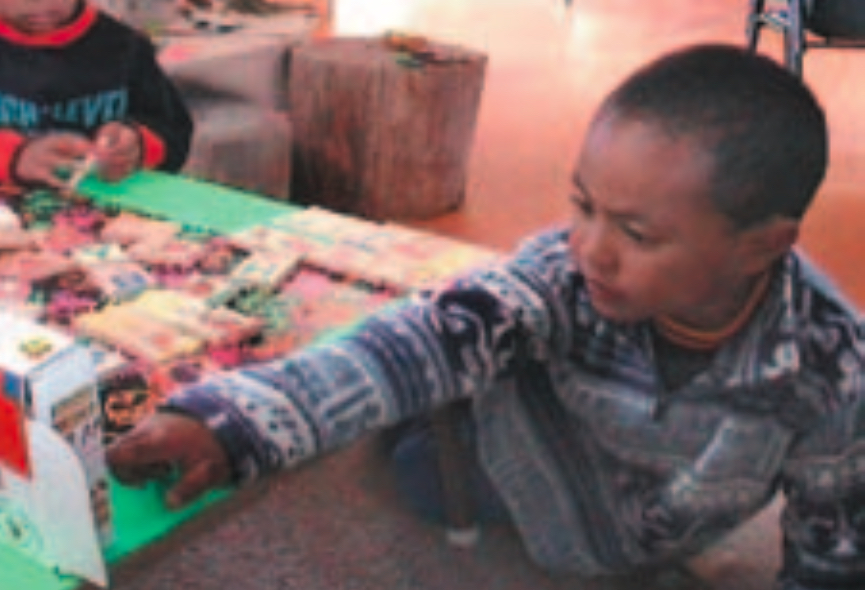
Fe‘ao was really focused on this activity and took time to look at all the pictures, checking with the picture on the box and back with the letter piece I had. He would then continue to scan the pieces until he found the right one. A friend joined him and offered some advice on which piece he should be choosing. “No, wrong one,” Fe‘ao replied, pointing at the box to show the picture he was looking for. Fe‘ao continued to play the game for some time.
Short-term review
What impressed me about this story was Fe‘ao’s concentration. He was really focused on the task he had set himself and had the confidence to express his ideas. Fe‘ao is showing an interest in letters and the alphabet.
Fe‘ao was really focused on this activity and took time to look at all the pictures, checking with the picture on the box and back with the letter piece I had. He would then continue to scan the pieces until he found the right one. A friend joined him and offered some advice on which piece he should be choosing. “No, wrong one,” Fe‘ao replied, pointing at the box to show the picture he was looking for. Fe‘ao continued to play the game for some time.
Short-term review
What impressed me about this story was Fe‘ao’s concentration. He was really focused on the task he had set himself and had the confidence to express his ideas. Fe‘ao is showing an interest in letters and the alphabet.
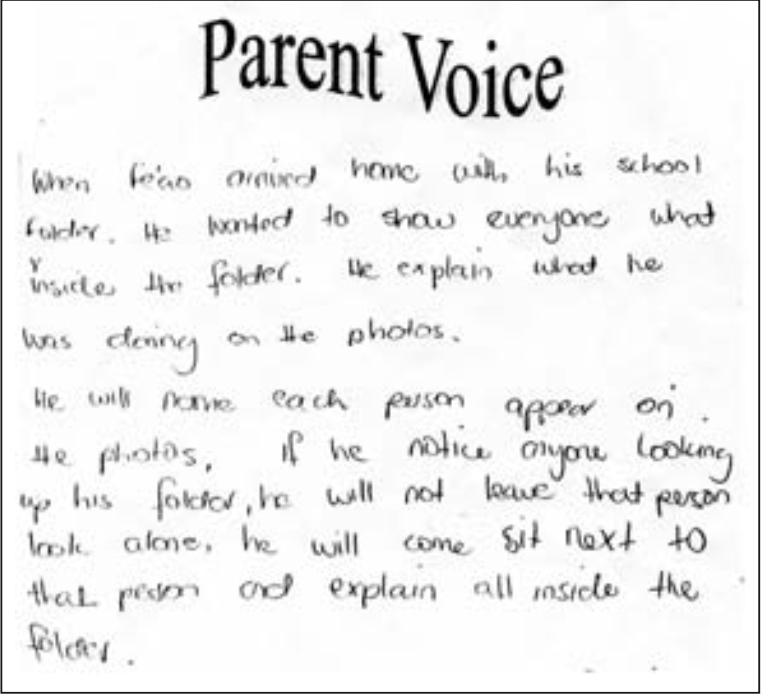
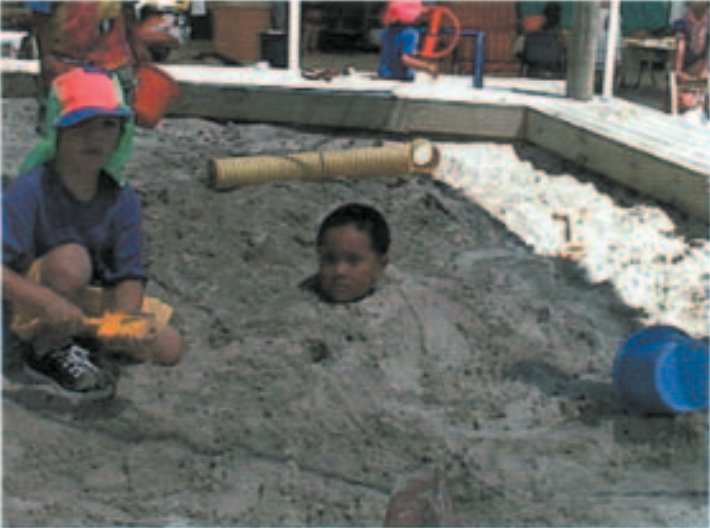
Where has Fe'ao's body gone?
Today at kindergarten Fe'ao was busy in the sandpit with his friends and Perry. They took turns to bury their bodies.
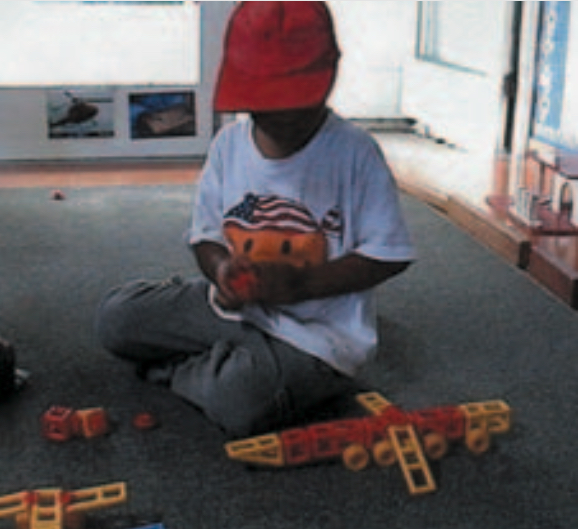
-
-
Fe'ao part 2
-
Learning story
23 April
Group story
A Learning Story
Belonging
Mana whenuaTaking an Interest Yesterday Jane had a surprise for us at mat time. In the weekend she had been shopping and had bought a “Bob the Builder” kite. We were very excited and wanted to fly it straight away. But there was no wind! We made the kite up and put it in a safe place to wait for the wind to come.
Today when we came to kindergarten it was a very windy day. Aminiasi and Fe'ao asked Jane if they could fly the kite. Jane was the inside teacher so Jane wrote a note for Karen, we went rushing outside to find her. Karen read the note: “Can we please fly the kite today?” “Yes” Karen replied. We were so excited, we raced back inside to get the kite, and the kite flew really high. Sometimes it would duck and dive in the sky and then fall to the ground. We wound up the string and launched it again.
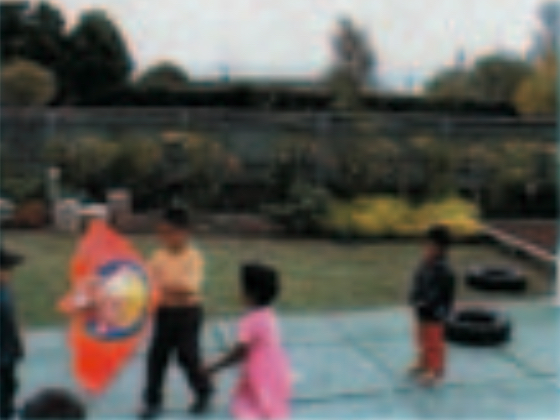
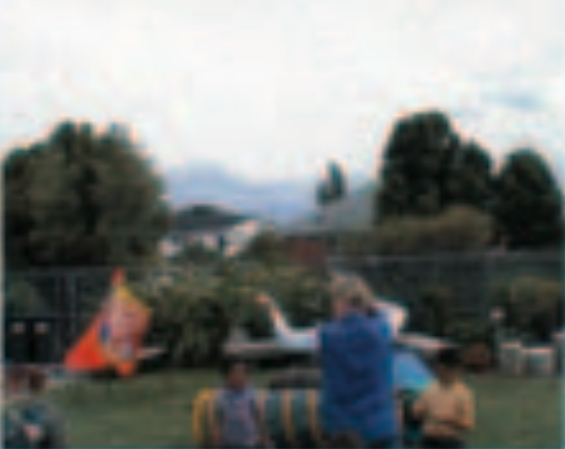
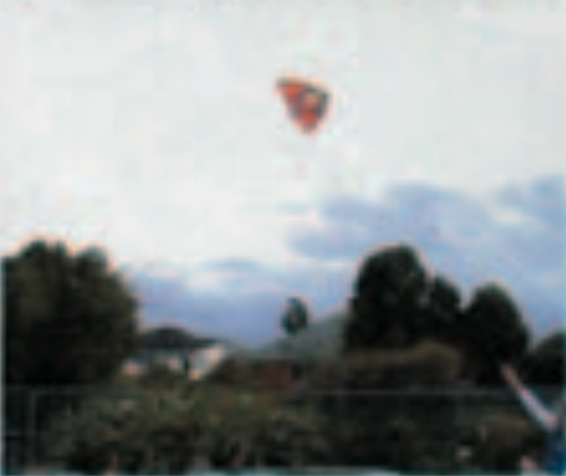
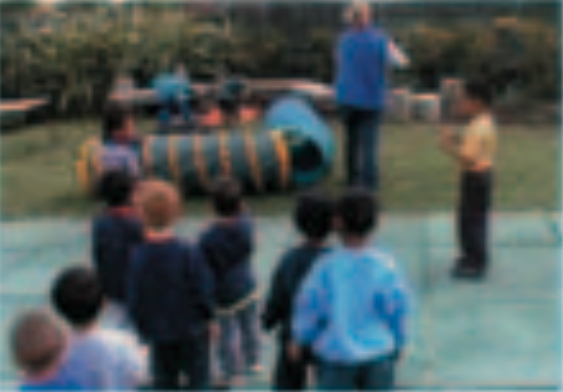
Well-being
Mana atuaBeing Involved Exploration
Mana aotūroaPersisting with Difficulty Communication
Mana reoExpressing an Idea or a Feeling Contribution
Mana tangataTaking Responsibility 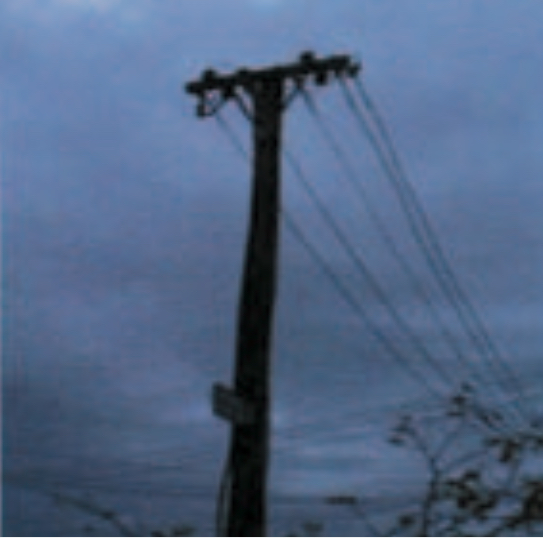
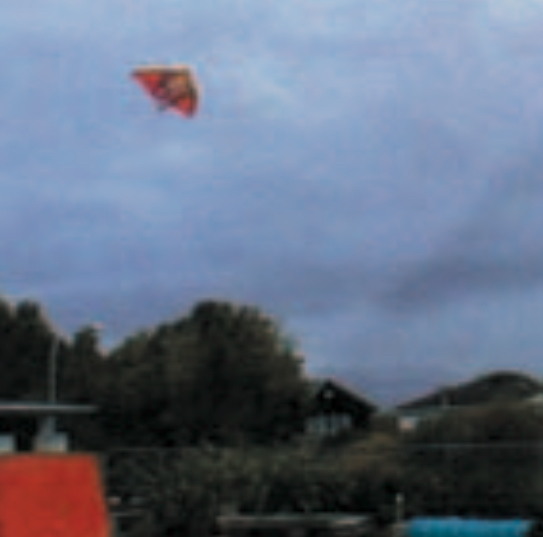
“When we are flying kites, we need to remember to look where the power lines are and keep our kites away from them.”
Short-term review
During Term 1 the children had a strong interest in kites and it is continuing this term.
Children experiment with designs and materials and then tried to fly them.
What next?
Develop this group interest into a long-term project for Term 2.
Learning story
Term 1
Teacher: Jane
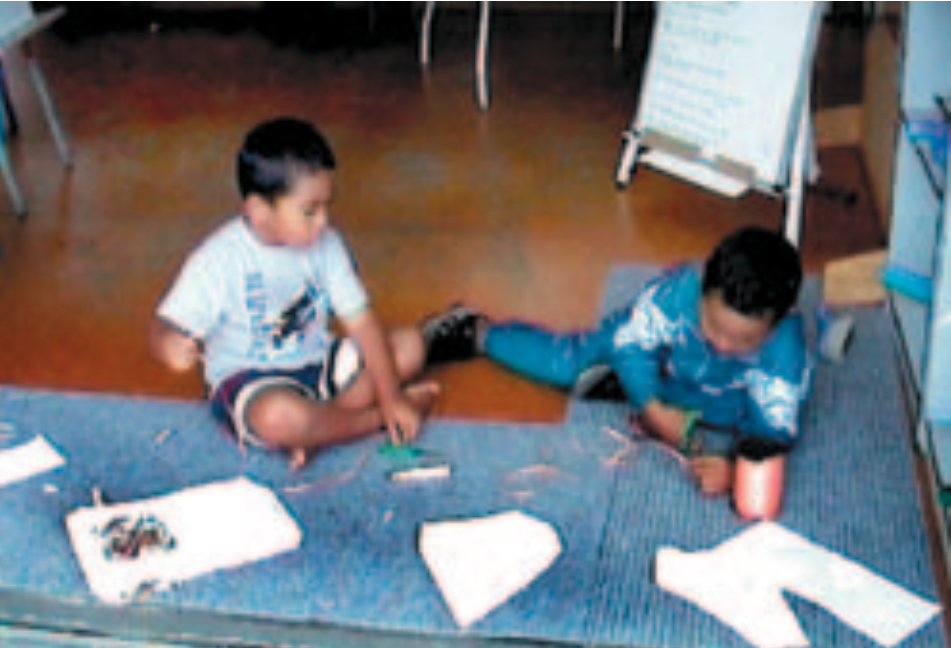
“I have my kite shape ready. Now I need to cut some ribbon out.”
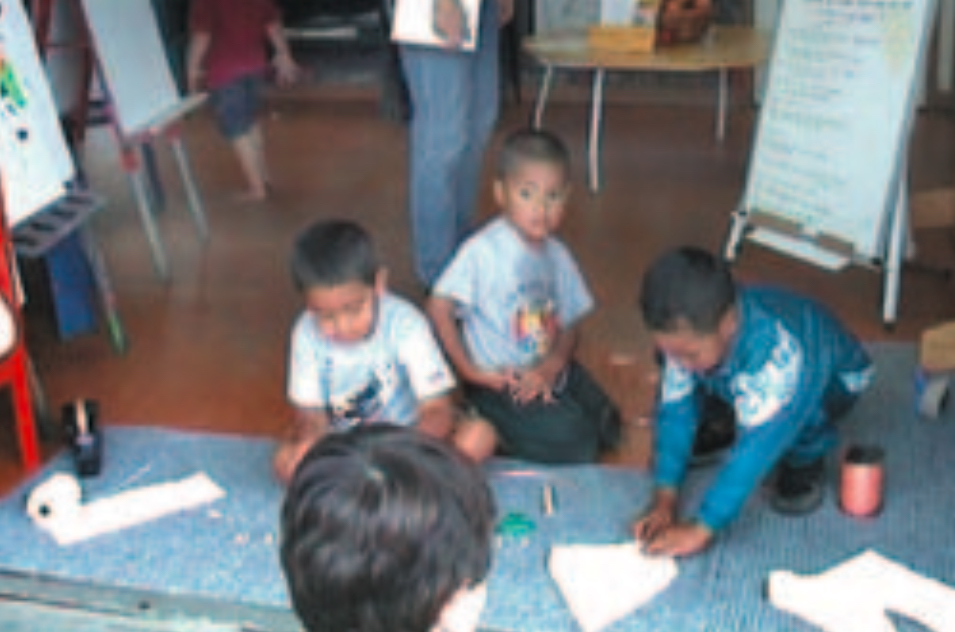
“I’ll use some sticky tape to stick the ribbon on.”
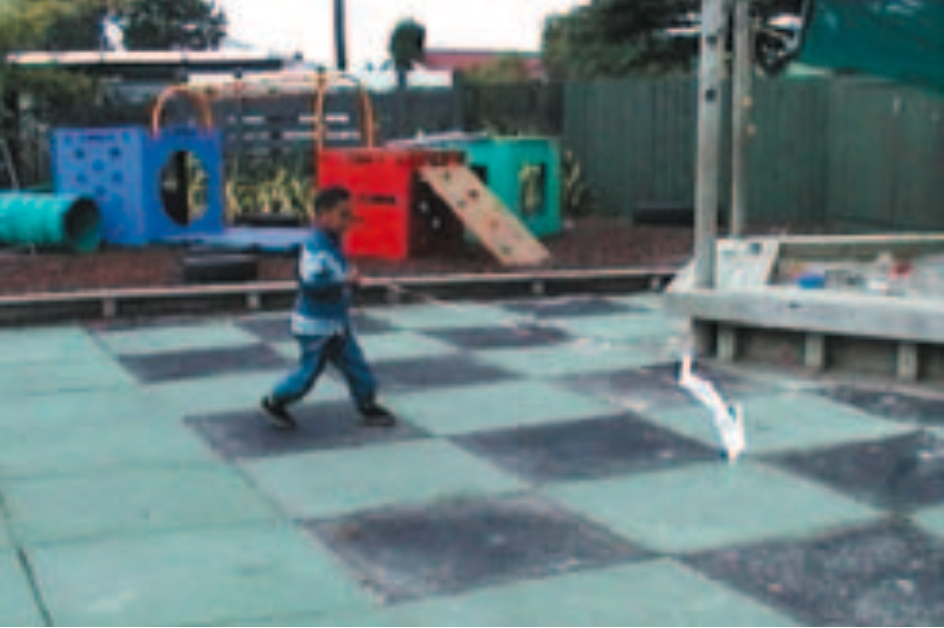
"Now I’m ready to fly my kite.”
Short-term review
Fe‘ao is very interested in kite making at the moment. He regularly comes up to me and tells me that he wants to make a kite. Fe‘ao really enjoys making and flying his kites with his friend Fatai.
What next?
We will continue to foster Fe‘ao’s interest in kites:
- talking about the different kites that he can make
- encouraging him to continue to fly his kites.
Fe‘ao has such a strong interest in kites that we wonder if he makes them at home.
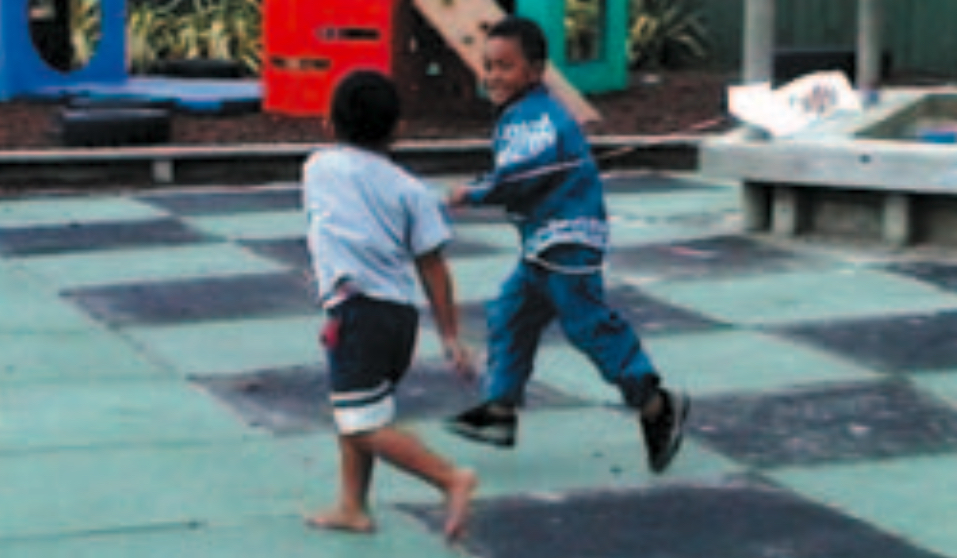
Parent's voice
3 May
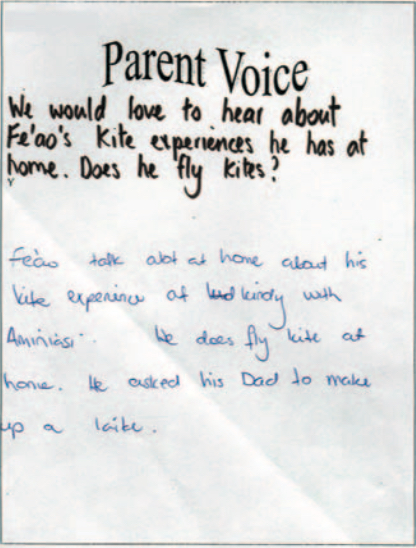
Group learning story
1 May
Yesterday, Aminiasi said he was sure the incubator was for making pizzas, but Monica realised it was for chicken eggs. Aminiasi had such a strong interest in pizzas that we decided to make them today.
At mat time, we talked about the toppings we like. We came up with lots of interesting ideas: cheese, chocolate, jelly beans, courgettes, mushrooms, tomato, and lots more. (See the Keeping Healthy board.) We talked about the healthy options and decided jelly beans and chocolate weren’t healthy. Then we made a list of the toppings we were going to have.
Today we began our great pizza making. First we made the base. We used flour, baking powder, and milk. When we had combined all the ingredients, we shaped our bases on pieces of tinfoil. We chose our own toppings and put them on all by ourselves ... Collette’s mum cooked the pizzas and put them into boxes ... One of the children’s uncles came to help on our second pizza-making day.
Short-term review
Today the children had the opportunity to have a hands-on experience making their own pizza. This linked into our Keeping Ourselves Healthy project and built on the children’s strong interest in baking. The children worked independently and completed most of the process by themselves.
What next?
The children will have the opportunity to have their ideas and thoughts recorded with a picture of their pizza. One copy will go into their file (as a child’s voice) and another in the pizza book. We’ll ask the children to find more healthy recipes we could make.
-
-
Fe'ao part 3
-
Child’s voice
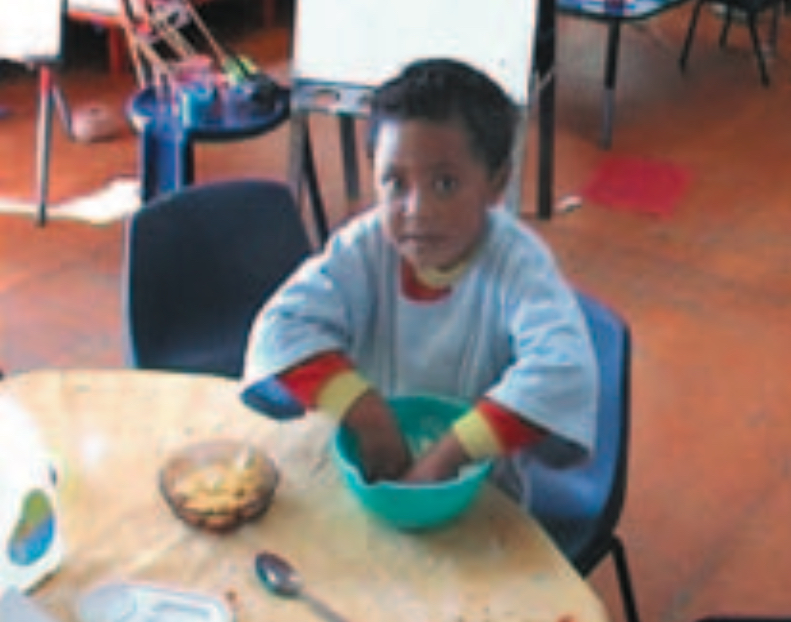
“I put cheese on my pizza. I put some tomato sauce and some tomato. Me and my dad ate my pizza. It was yum.”
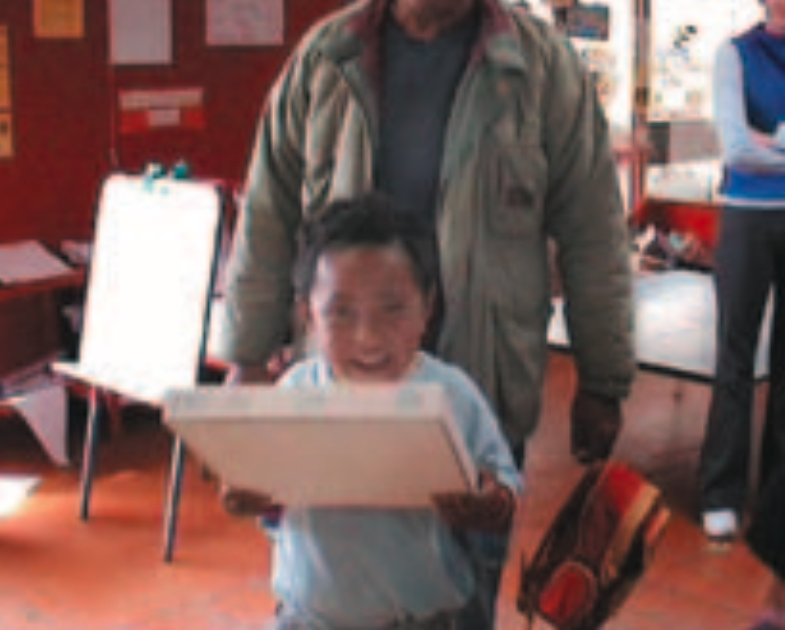
Fe‘ao said, “I just take the pizza home with my grandpa. My grandpa is coming over here.
I put the pizza in the box to come home.”
Parent’s voice
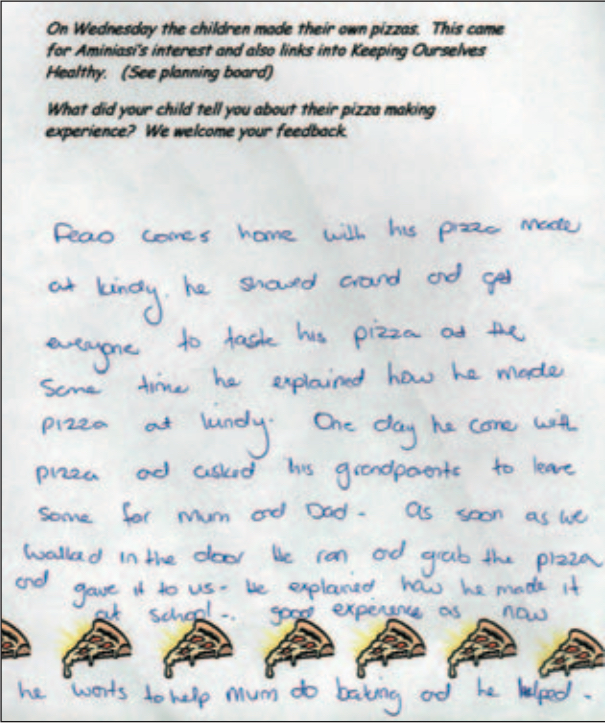
Learning story
7 June Teacher: Karen
Today, Fe‘ao was working with his friend Sung Hyun. They have been collecting equipment from the shed. Sung Hyun called out to me to look at what they were doing. I went over to see what they had been creating. “We’re making a big house,” Fe‘ao told me.
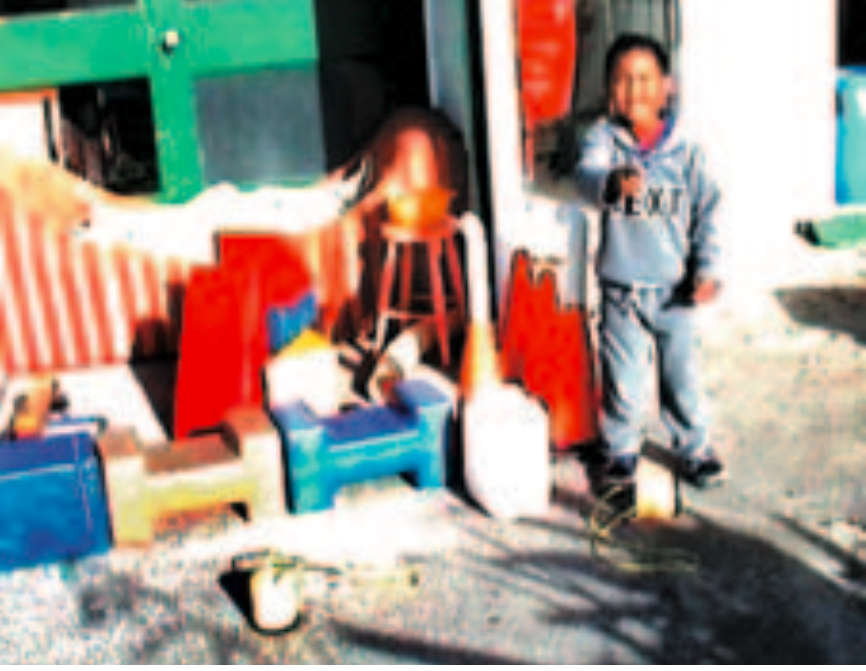
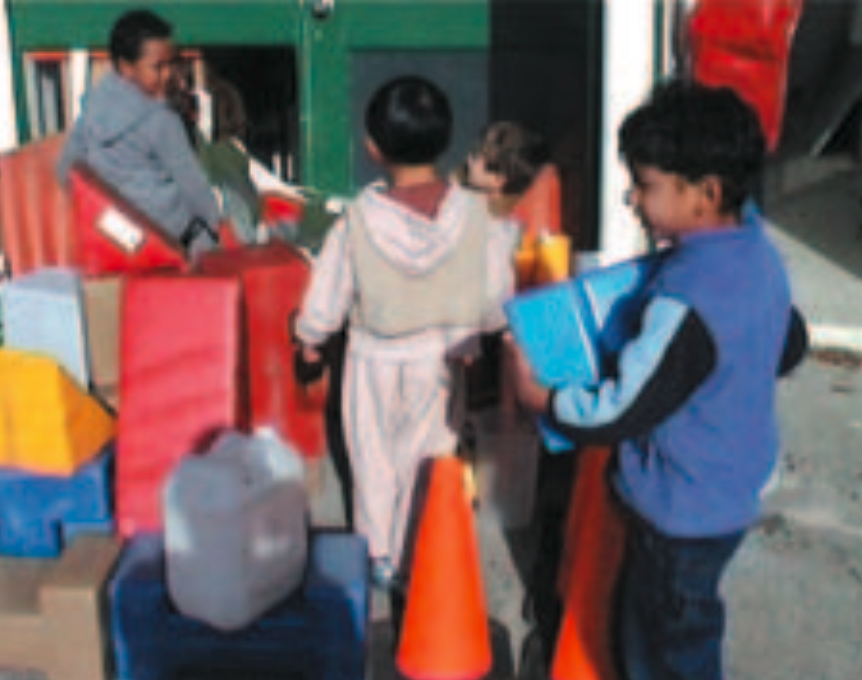
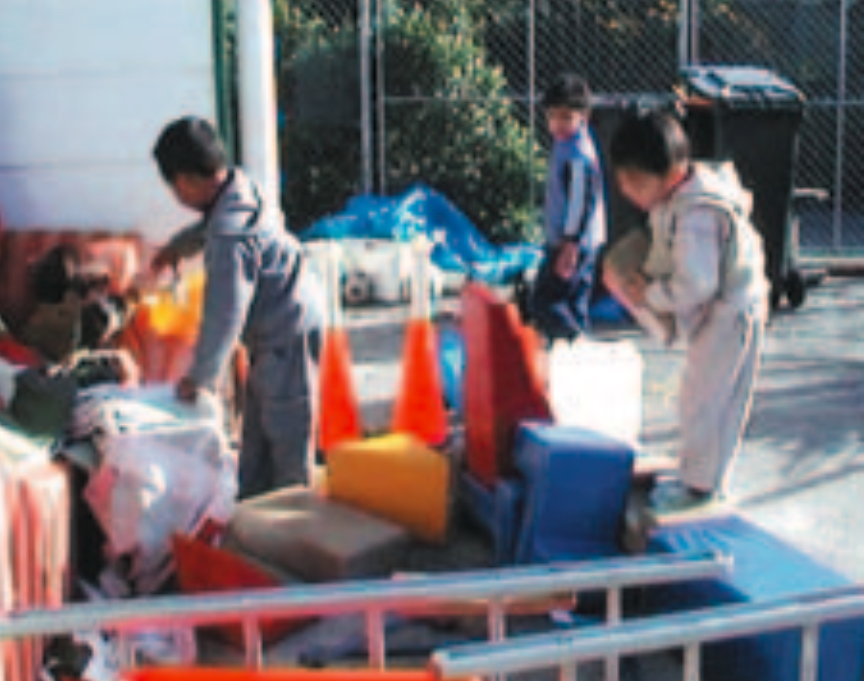
Fe‘ao continued to work with Sung Hyun, building their house. More children came along, and the boys included them in their play. The children made a space that was especially for the door, and the children took their shoes off before they got into bed.
What a great house, Fe‘ao!
Short-term review
It is great to see Fe‘ao enjoying relationships with his friends and working together on a project that they had set themselves. (“Te Whāriki”, Contribution, goal 3.1)
You can see from the smile on Fe‘ao’s face that he was pleased with his house. He has an interest in building and constructing houses.
What next?
At times, Fe‘ao finds it a challenge to express his needs. We talked to his dad, who told us that Fe‘ao sometimes finds it challenging at church, too. At kindergarten, we will support Fe‘ao when he is unsure what words to use by role-modelling for him phrases such as “Can I play?”, “Can I have a turn?”, and “Stop! I don’t like it.”
Perhaps we could encourage him to work on more house designs and building. Maybe we could help him extend this interest to the carpentry table.
Learning story
4 June Teacher: Karen
Today Patrick brought some long pieces of wood to kindergarten for the carpentry area. Fe‘ao used a piece of wood for a horse and was riding around the outdoor area. When he came back to the carpentry area, he said, “This is my horse.”
“What a great idea,” I encouraged him. “What could you use to make your horse’s face?”
Fe‘ao went to the cupboard and looked in the baskets. He came back with some sheepskin.
“For the ears,” he said as he dangled the sheepskin around his head.
“What are you going to use to make his head?” I asked.
Fe‘ao returned to the cupboard and had another look. This time, he returned with some paper. “For the face and need a mouth,” Fe‘ao said. “Mouths go neigh, like sheep,” he explained. Fe‘ao’s actions and mannerisms made me laugh.
Then we got down to serious work. Fe‘ao set about attaching his paper to the piece of wood he was using for the body.
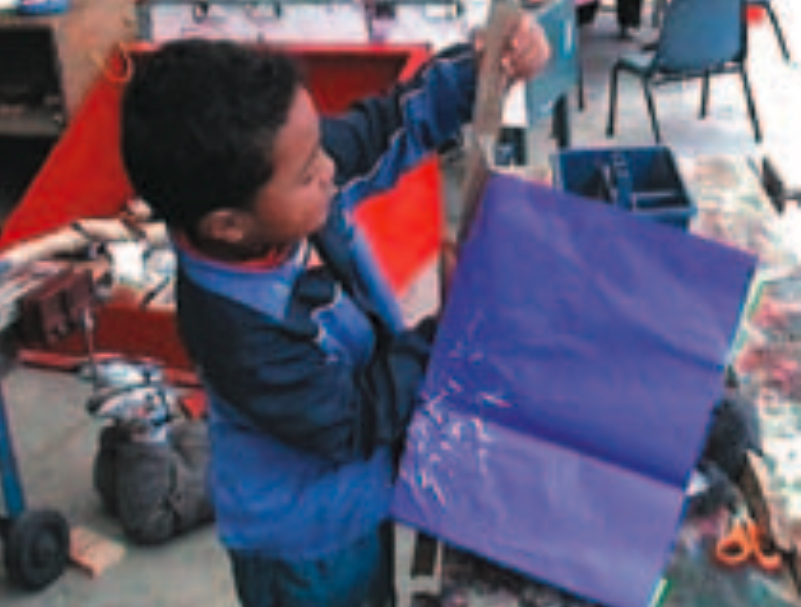
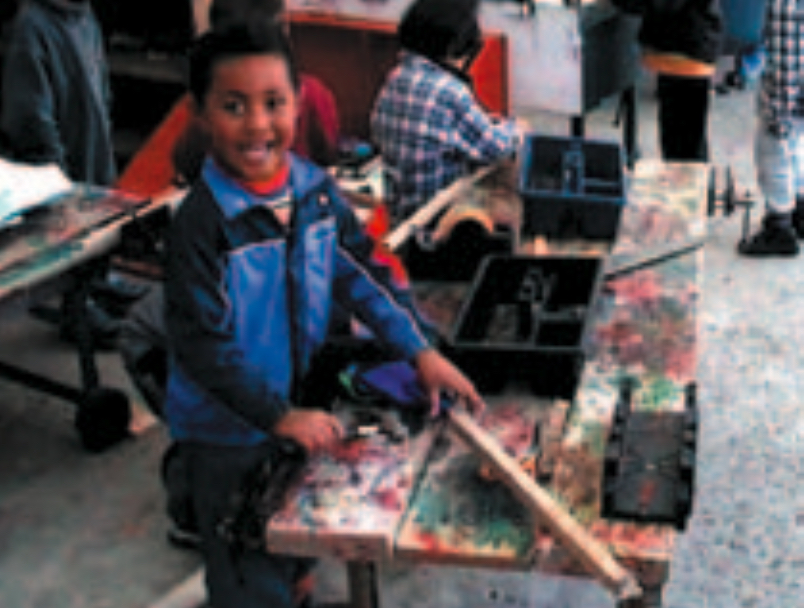
-
-
Fe'ao part 4
-
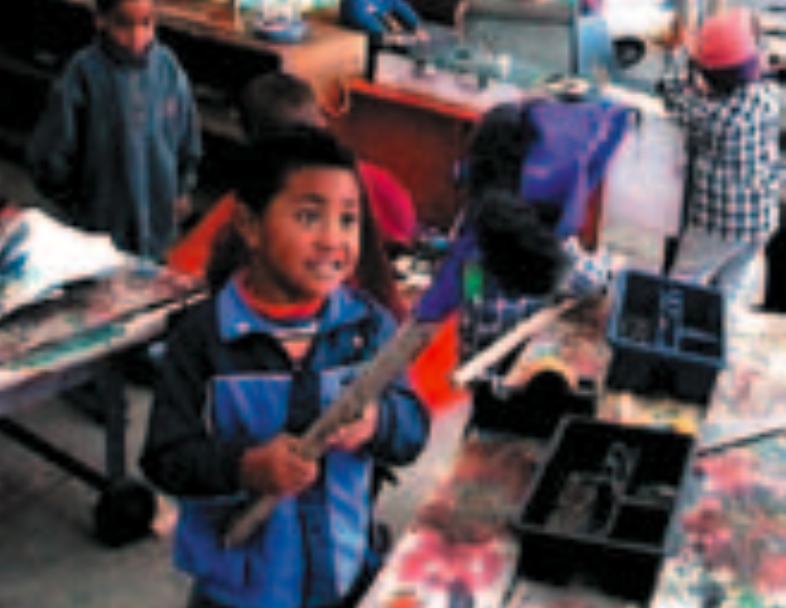
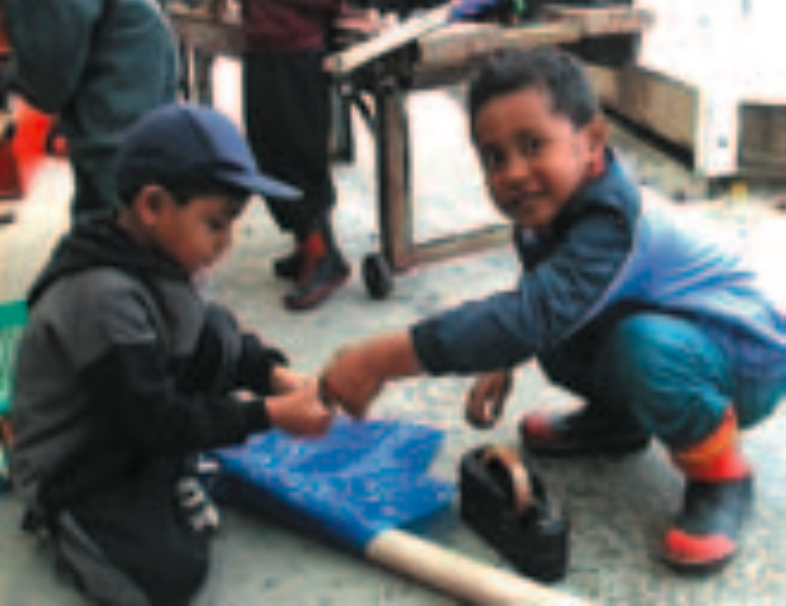
While the children were working in the carpentry area, someone started singing “Bob the Builder, Can We Fix It?” This sparked an impromptu music session, and it didn’t take long before we got the tape deck out and had it blasting out the Bob the Builder song. Fe‘ao was boogying away and singing while he constructed his horse. It was great fun! He added the sheepskin ears and decided to use bottle tops for eyes.
When he was showing Jane how his horse worked, its ears fell off. Fe‘ao returned to the carpentry table and fixed them back into place.
Fe‘ao even had time to help his friend Usaamah. He showed Usaamah how to stick his paper on.
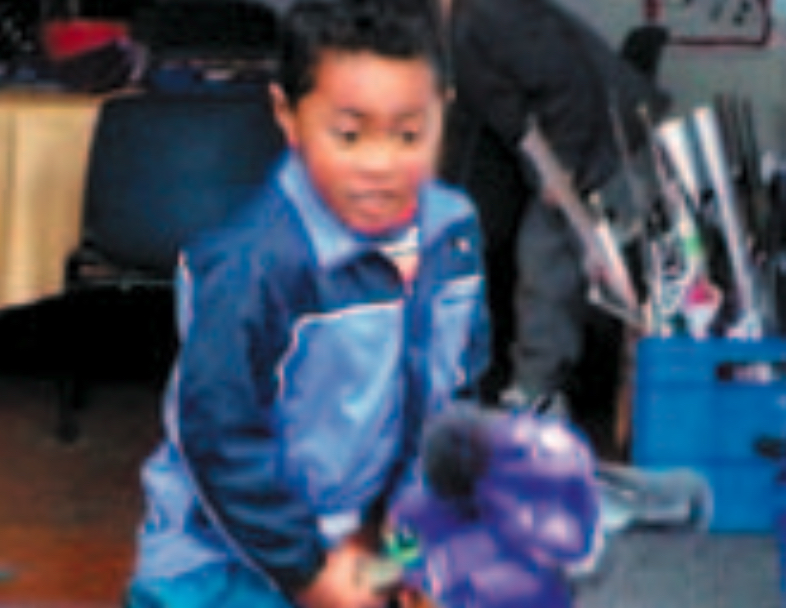
When Fe‘ao’s horse was finished, he galloped around the playground. You can see from the photo Fe‘ao’s enjoyment as he was riding his horse. Fe‘ao was very proud of his work and put his horse on the creation stand to show at mat time.
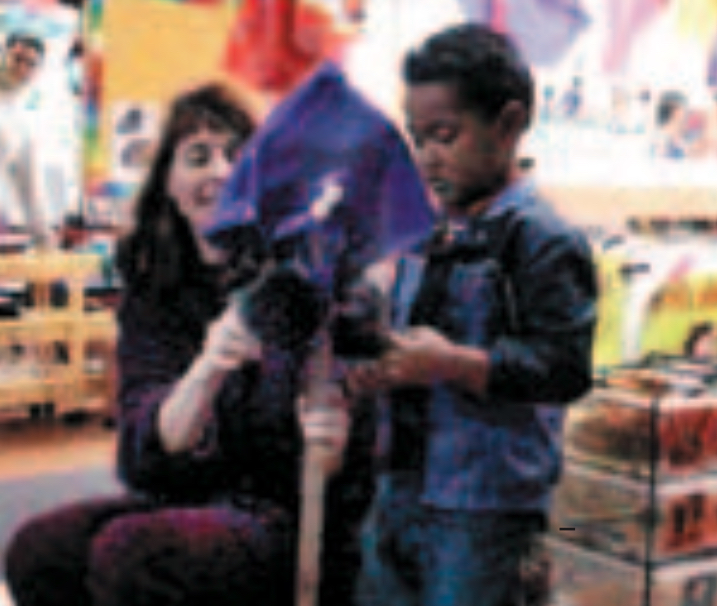
Short-term review
What a fantastic idea! Fe‘ao directed his own learning today by setting himself a task: making a horse. Fe‘ao was focused on this task and persisted until he had finished. He was open to suggestions and created a face for his horse. Fe‘ao worked alongside his friend Usaamah, sharing his ideas and helping him with his horse. (“Te Whāriki”, Communication, goal 3.1)
What next?
In Fe‘ao’s last story, we talked about his interest in building and constructing houses and the possibility of extending this interest to the carpentry table. Let’s extend Fe‘ao’s ideas by supporting and encouraging him to develop his ideas further. Perhaps we could use pictures to provoke discussion and ideas and questions to encourage Fe‘ao to plan his projects.
Learning story
17 and 18 July
Teacher: Karen
This story took place over two days and reflects Fe‘ao’s interest in books.
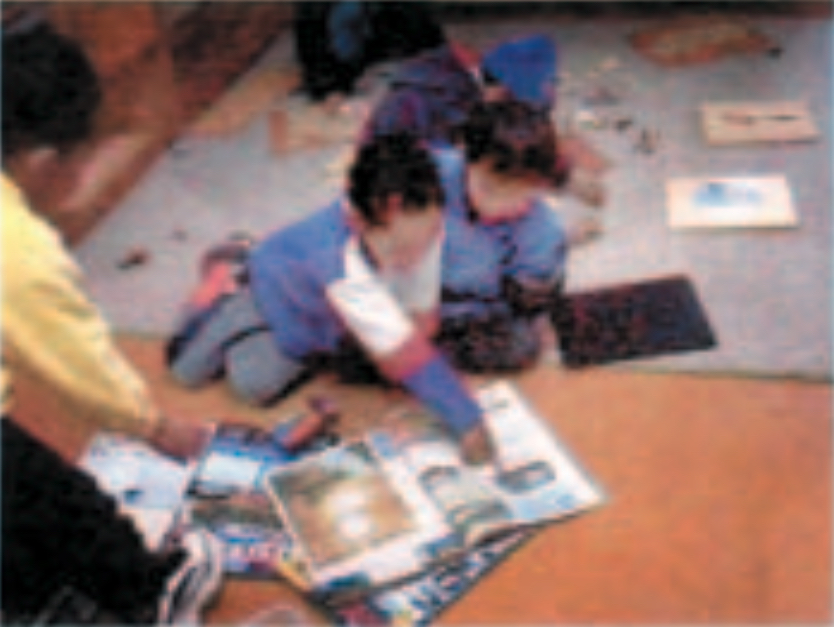
On Tuesday, Fe‘ao and his friend Sung Hyun explored a book about fishing. They chatted about the pictures, and Fe‘ao pointed out pictures of interest.
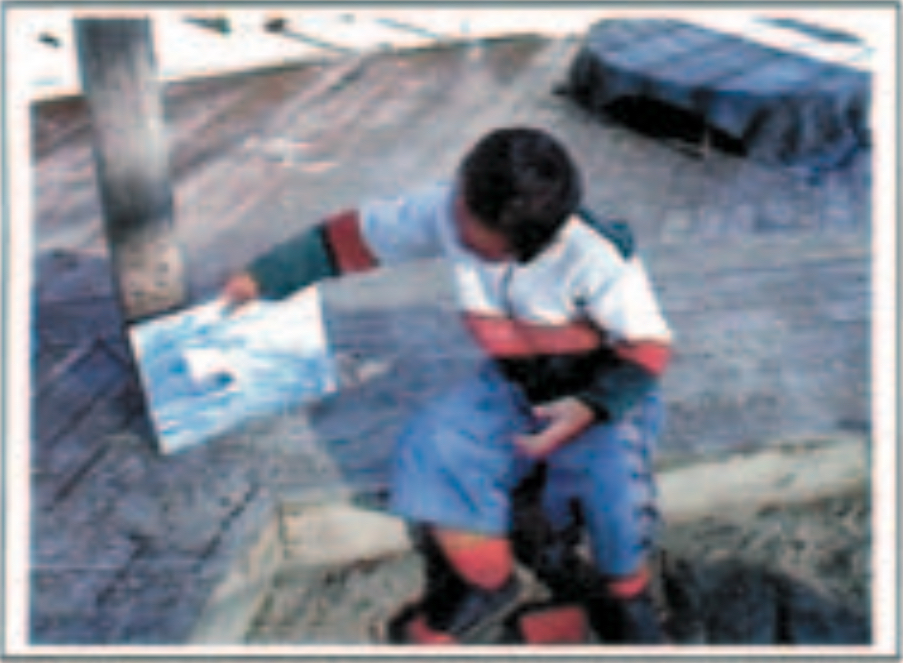
Today, Fe‘ao was involved in another friend’s interest, focusing on sharks. I had placed a book in a book holder on the sandpit deck for the children to use as a reference while they built a shark in the sandpit. Before long, Fe‘ao was drawn to the book and had a rich conversation with his friend Usaamah.
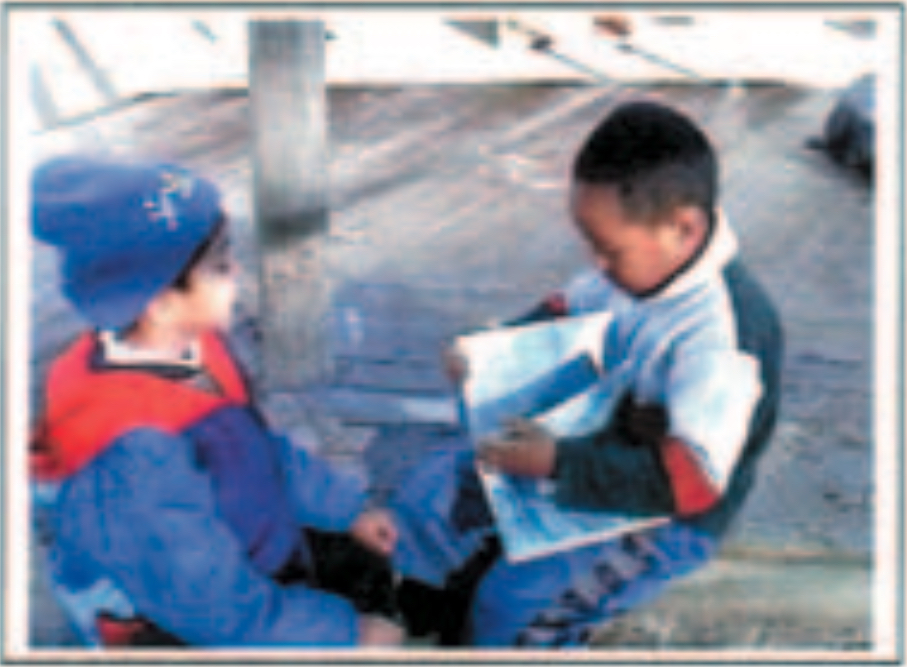
They discussed each page and shared their ideas and thoughts.
“Look at those colours,” said Fe‘ao.
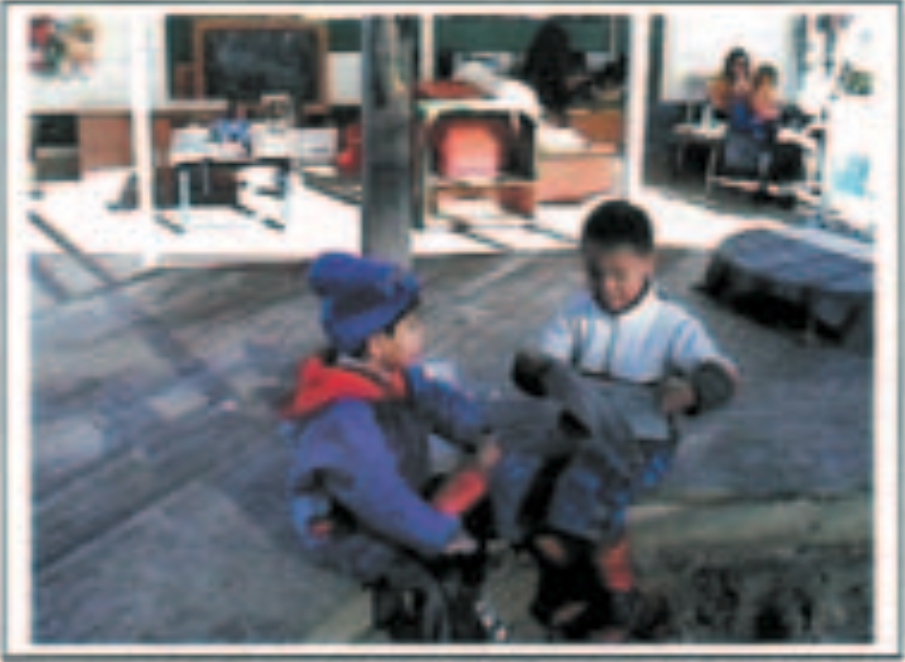
Fe‘ao and Usaamah looked at all the pages and chatted about them. Fe‘ao then turned back to the beginning. “Read the story again,” Usaamah suggests.
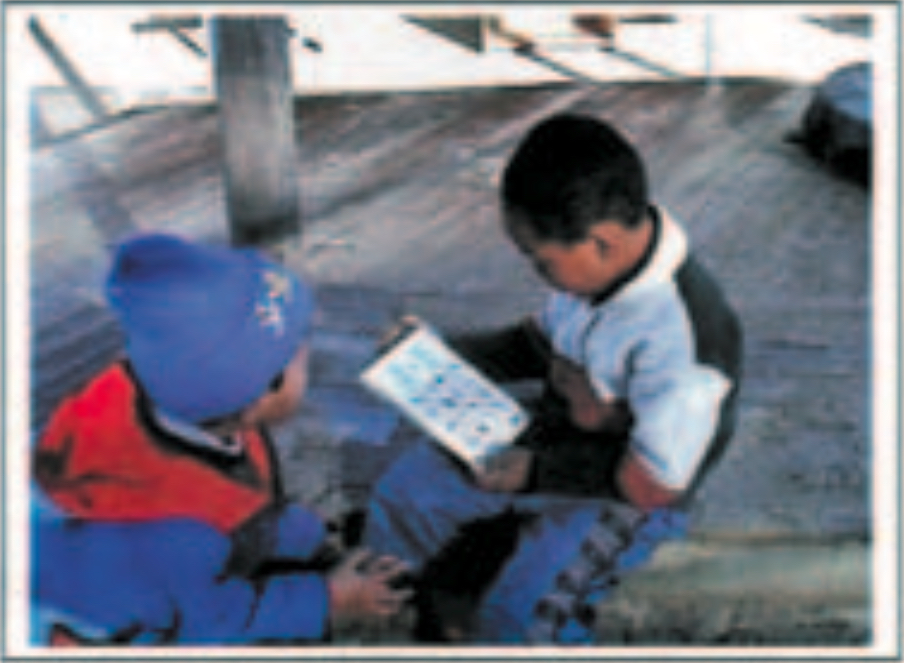
“He is finding the baby ones,” Fe‘ao tells Usaamah. “Look at this. Make the baby shark look at this,” said Fe‘ao. “It’s squashing. I’ll show you,” Fe‘ao continues to tell his friend.
After reading the book, Fe‘ao became involved in building the model shark in the sandpit.
-
-
Fe'ao part 5
-
Short-term review
What precious pictures – Fe‘ao enjoying books.
Fe‘ao is showing a strong interest in reading books. He is reading books from the pictures and engaging in rich dialogue with his friends, discussing the pictures and putting forward his ideas. (“Te Whāriki”, Exploration, goal 3.2)
Fe‘ao is developing early literacy skills. He has an expectation that words and books can amuse, delight, inform, and excite. (“Te Whāriki”, Communication, goal 3.4)
From reading your Parent’s voices and talking to you, I know that Fe‘ao often reads his portfolio, including when he is in bed. His passion for books is shining through in his interests at kindergarten, a great learning disposition for him to have.
What next?
We will continue to foster Fe‘ao’s passion for books by sharing lots and lots of stories. Fe‘ao loves to tell stories from looking at the pictures, so we could encourage discussion about what is happening in the pictures and what might happen next in the story.
We could also extend Fe‘ao’s interests to writing and role-model the idea that print has a purpose by recording Fe‘ao’s ideas and stories.
We have stories in Tongan that Fe‘ao might like to take home and share with his family. The books are in a box in the book corner. You are welcome to use it like a library.
I have also enclosed some pamphlets that give great ideas to foster Fe‘ao’s interest at home.Learning story
Fe‘ao, the teacher
Term 3, Week 4
Teacher: Glynis
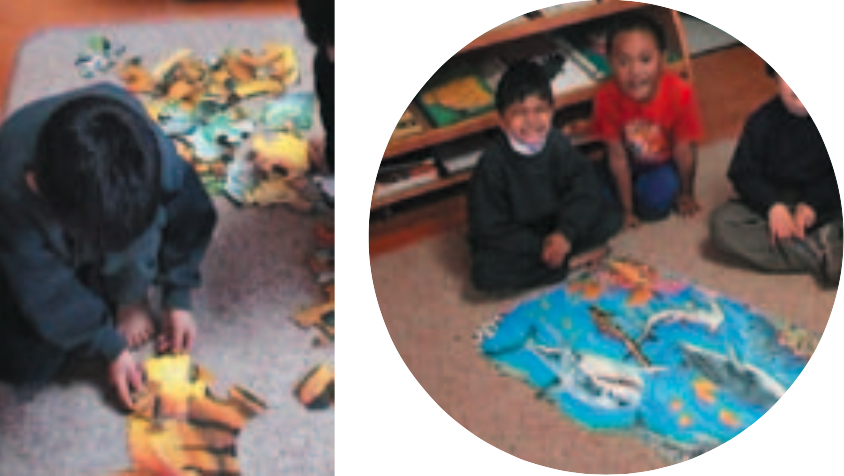
For a while, Fe‘ao has had an interest in sharks, and recently he completed the shark puzzle by himself. Today, Usaamah and Patrick decided to try and do this quite difficult puzzle. They were finding it quite hard, and they asked me for help. Fe‘ao heard this and said, “I can help, Glynis. I can do it.”
“That’s a great idea, Fe‘ao. Thank you. That’s a kind thing to do to help your friends,” I said.
Fe‘ao, Usaamah, and Patrick completed the puzzle together. Great job, everyone.
Short-term review
Fe‘ao demonstrates great leadership qualities, taking responsibility for helping his friends. Thank you, Fe‘ao.
Since Fe‘ao has come to morning kindergarten, he has shown his love of challenges and his great ability to absorb knowledge in many ways. He loves to share this in a nice, quiet way with his friends.
With his demonstrating and helping he is increasing his verbal skills. Also, revisiting what he knows while imparting it to others is the best way for him to increase and reinforce his own knowledge.
What next?
We can encourage Fe‘ao’s leadership skills by giving him responsibilities. We will also foster a greater sense of responsibility in Fe‘ao by asking him to help younger children.
Child’s voice
22 August Teacher: Karen
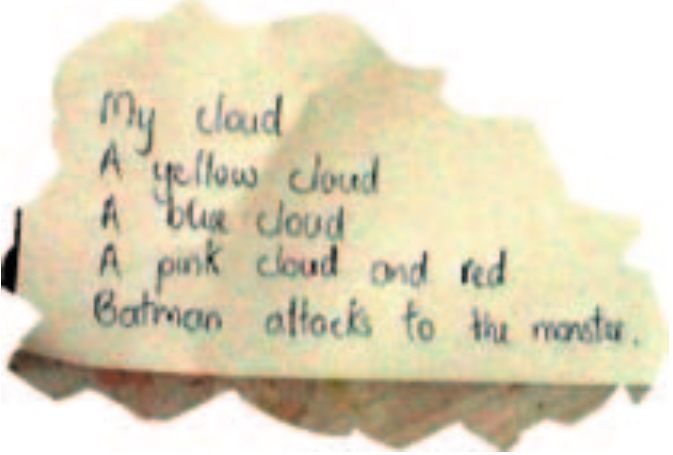
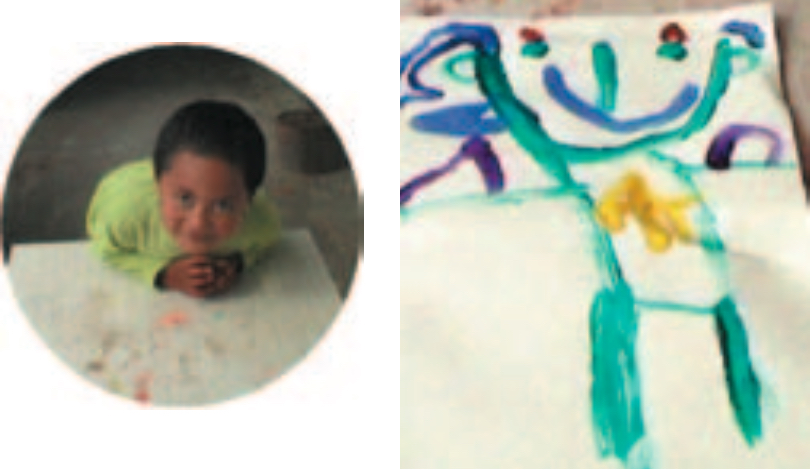
Short-term review
Fe‘ao came and showed me his beautiful painting. “You read my story?” he requested. Fe‘ao understands that his words can be recorded in a meaningful way and wanted to tell me a story about his picture. (“Te Whāriki”, Communication, goal 3.1)
Fe‘ao has been helping his friend Usaamah write a book about clouds (a passion of Usaamah’s). As I listened to Fe‘ao’s story, I realised that Fe‘ao’s story had been motivated by his own interest in Usaamah’s story.
“Fe‘ao, would you like to make your own book?” I asked.
“Yes,” Fe‘ao replied, with a smile from ear to ear!
What next?
Fe‘ao could write and make his own book! I wonder what your book will be about, Fe‘ao?
Learning story
Fe‘ao and his cloud book
23 October
Teacher: Jane
At the beginning of last week, I had just put a new learning story in Fe‘ao’s portfolio. I was eager to show him his new story and approached him at the beginning of the session. Fe‘ao and I read his story together. After we had finished, Fe‘ao looked through his portfolio, smiling and commenting to me about each story.
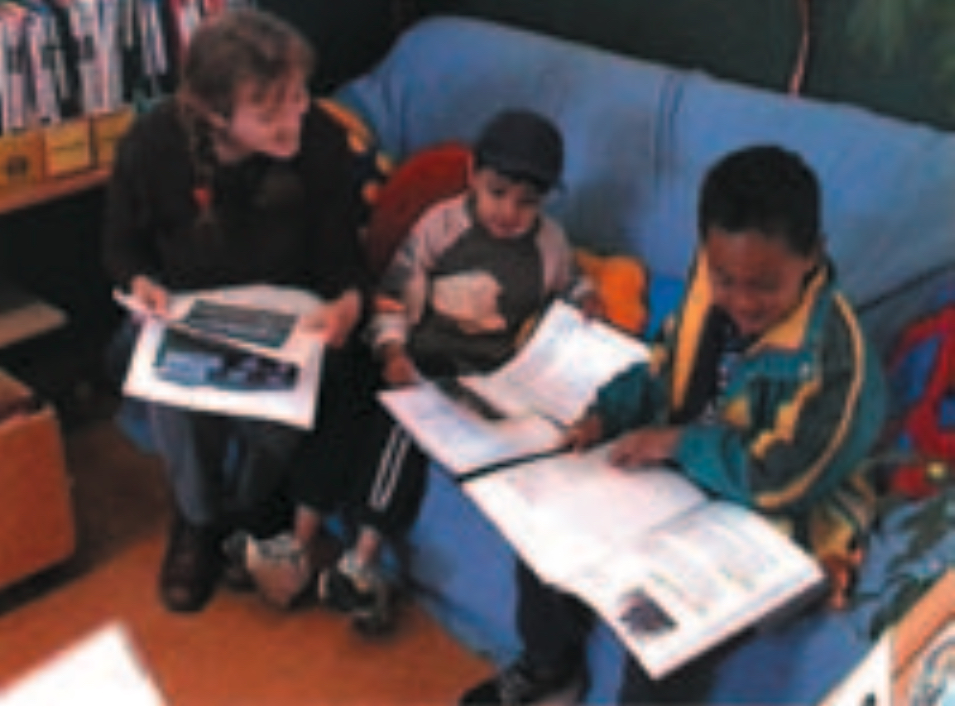
The What next? section of Fe‘ao’s two previous learning stories included the suggestion that he could make a cloud book. Fe‘ao had seen his friend Usaamah make a cloud book and had expressed an interest in clouds as well. I asked Fe‘ao if he would still like to make a cloud book. Fe‘ao’s smile beamed as he told me that, yes, he would like to make a book.
The bookmaking process took all that week. Firstly, Fe‘ao looked at some cloud pictures on the Internet. He was very clear about what pictures he wanted for his book. He chose a couple of pictures that he remembered seeing in Usaamah’s book as well as choosing his own pictures.
Each day, Fe‘ao added more to his book by painting clouds and explaining to me what he would like me to write on the pages.
-
-
Fe'ao part 6
-
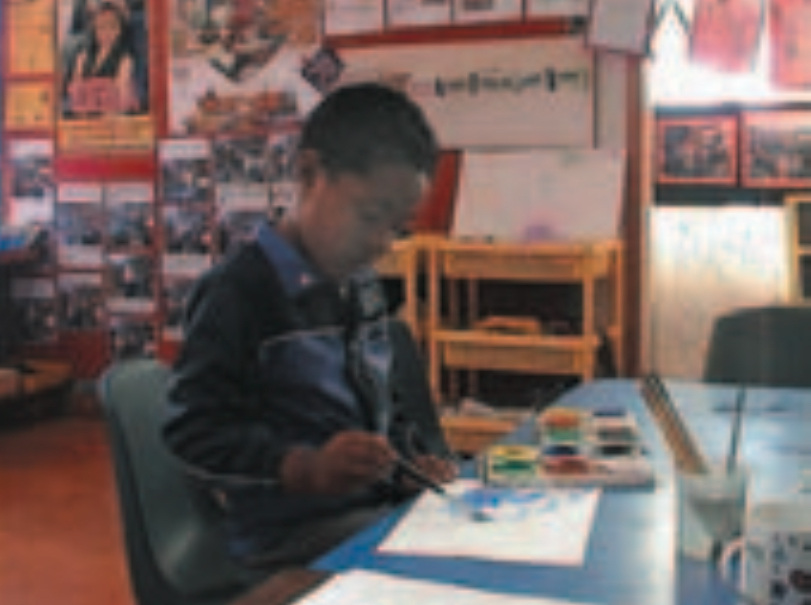
On the first two days, I asked Fe‘ao if he would like to work on his book some more. I wanted to let Fe‘ao know that it was his decision because it was his special creation. However, after the second day, I didn’t have to ask Fe‘ao anymore. He would come up to me and ask, “Can we do my cloud book, now?”, “Where is my cloud book?”, or “Can I take my cloud pictures home now?”
The cloud book will be ready to read today. Fe‘ao can share his great creation with his family and friends. I look forward to reading your book with you, Fe‘ao.
Fe‘ao noticed that Usaamah had a picture of his house in his cloud book. He asked if he could have a picture of his house as well.

Short-term review
Fe‘ao displayed his creative talents yet again. The book-making process was not something that we could finish in a day, but Fe‘ao showed great perseverance and patience. He was able to say what he wanted his book to look like and would come up to me independently and request that we continue to work on it.
Fe‘ao, your enthusiasm and eagerness to work on your creation were lovely to see. I am glad that I got to share in your ideas and learning. It was great to be able to follow up together on your What next? ideas. What other great ideas do you have, Fe‘ao?
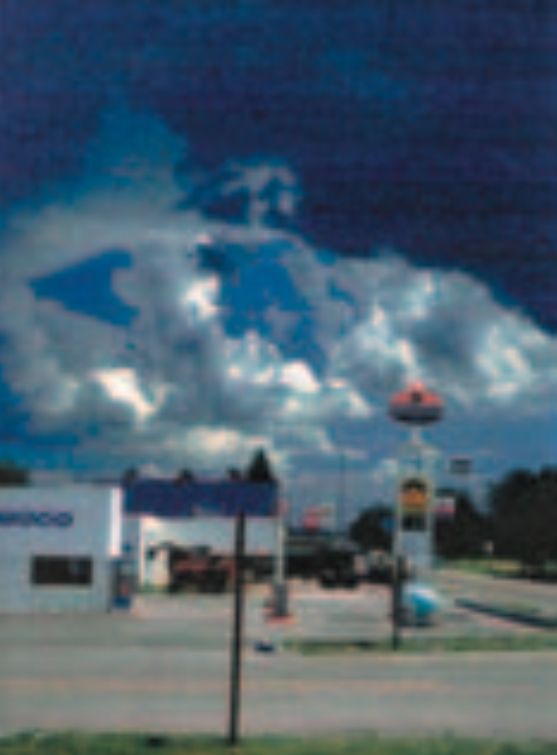
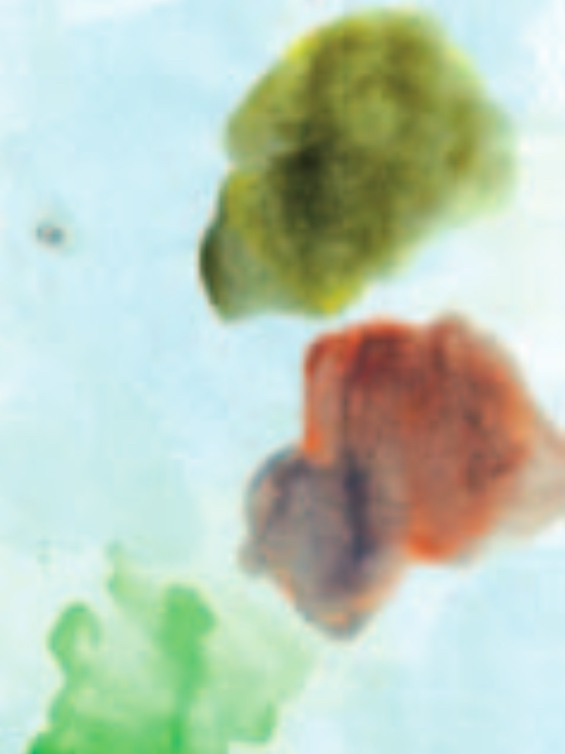
“The shop and the rain clouds and the white clouds. Everybody will get wet.”

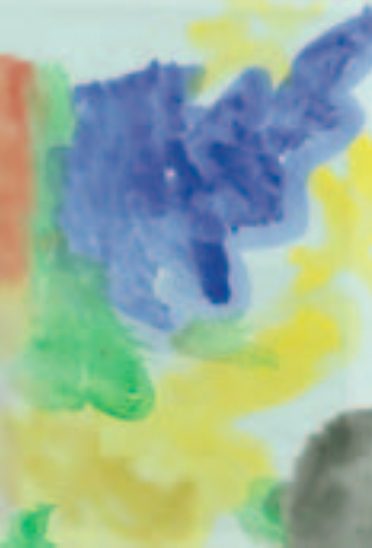
“A tree and a cloud.”

“The road and the clouds and the home. White and dark clouds.”
What next?
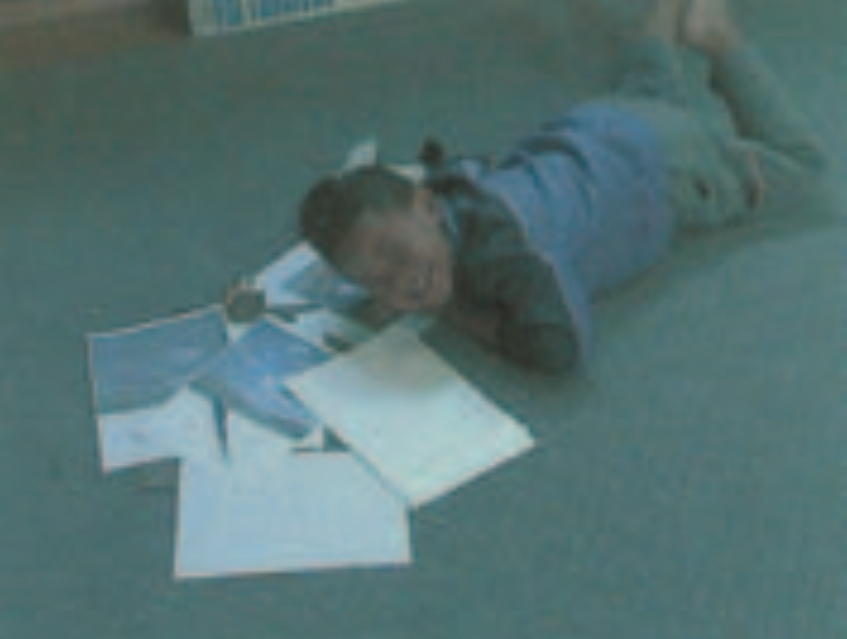
Read the cloud book with Fe‘ao and ask him if we can read it to the children at mat time.
-

